Nava Atlas's Blog, page 26
June 7, 2022
South Riding by Winifred Holtby (1936)
South Riding was the last published novel of Winifred Holtby (1898 – 1935), released the year after her untimely death at the age of thirty-six. It remains her best-known work and has been adapted several times for various media.
Winifred Holtby was an accomplished British author, journalist, and activist. According to this site’s biography of Holtby:
She also had a successful career in journalism and wrote the first critical study of Virginia Woolf in English. During her lifetime, her fame derived from her work for prominent newspapers and magazines, including the feminist publication Time and Tide. She wrote about democracy and social welfare, feminism and pacifism, education and responsibility, racism and injustice.
South Riding’s publication was completed with Vera Brittain’s intervention (her dear lifelong friend), overriding the concerns of Alice Holtby, Winifred’s mother. It has never been out of print and sold 40,000 copies in the first year in the UK and 20,000 copies in the US. It was awarded the James Tait Black Memorial Prize in 1937 and, over time, has enjoyed a resurgence of popularity with a film, radio dramatizations, and the 2011 BBC series.
South Riding is set in a fictional area of Yorkshire. The main characters are Sarah Burton, a young headmistress, Joe Astell, a poverty-fighting socialist, Robert Carne, a conservative who is tormented by a disastrous marriage, and Mrs. Beddows, the first woman alderman of the district. The latter was surely inspired by Holtby’s mother, Alice, who held the same post in her real-life area of Yorkshire.
A brief plot summary
From the Audible audiobook description:
“Winner of the James Tait Black Memorial Prize, Winifred Holtby’s greatest novel was published posthumously Winifred Holtby’s masterpiece is a rich evocation of the lives and relationships of the characters of South Riding. Sarah Burton, the fiery young headmistress of the local girls’ school; Mrs Beddows, the district’s first alderwoman–based on Holtby’s own mother; and Robert Carne, the conservative gentleman-farmer locked in a disastrous marriage — with whom the radical Sarah Burton falls in love. Showing how public decisions can mold the individual, this story offers a panoramic and unforgettable view of Yorkshire life.”
The book enjoyed much positive attention from the time it was published, becoming a true modern class for its complexity, readability, attention to the details of everyday life, and observations of human nature.
A 1936 Review of South Riding
From the original review by L.P Hartley in The Observer (London, March 1, 1936: “Miss Winifred Holtby’s Last Novel”
The title of Miss Holtby’s latest and, unhappily, her last novel suggests à fabulous setting, but as a matter of fact, there is nothing other-worldly in South Riding.
Even without the help of the map on the jacket we could identify the estuary of the River Leame and recognize the great city of Kingsport on its northern shore.
And perhaps those familiar with the district will be able to find counterparts for Flintonbridge and Kiplington and Cold Harbour Colony — that stretch of Dutch landscape reclaimed from the marshes of the Leame by an eighteenth-century philanthropist.
A view of society in Southeast Yorkshire
Miss Holtby has used her imagination not to create a world but to bring vividly before our eyes a world already in being. South Riding shows, in panorama and also in cross-section, a comprehensive view of society in Southeast Yorkshire, and among the hundred-and-sixty-nine characters are to be found a kitten, Kate Theresa, who plays a small part in the story, and a horse, Black Hussar, who plays a large one.
There is a common force which affects the lives of all these people if it does not actually bring them together: the County Council.
The book is divided into eight parts: Education, Highways and Bridges, Agriculture and Small Holdings, Public Health, Public Assistance, Mental Deficiency, Finance, Housing, and Town Planning: and each is prefaced by an extract from the agenda or minutes of the Council meetings.
It is, therefore, as collectivist in conception as a novel can be: “We are all members one of another” might be its motto. But Yorkshire people, whatever their political convictions, are in the main individualists at heart. Miss Holtby was well aware of this.
The Council issues its decrees and the electors obey, but not like automata. Each has his or her private interpretation of the public will, his or her personal reactions.
Miss Sarah Barton
In the case of Miss Sarah Barton, the Council’s action changed the entire shape and color of a life. But for her appointment to the headmistress-ship Kiplington High School for Girls she would never have met Robert Carne or fallen in love with him.
She would have remained what she was, conscientious, energetic, efficient, compassionate, with a justifiable confidence in herself and her powers. She would have continued to make war on muddle and ignorance; but without the experience of that supreme defeat and humiliation (a little softened by Mrs. Beddows’ nearly forgotten message) she would have been incomplete, with no knowledge of suffering save at second-hand.
Carne himself, sporting farmer, and local squire, would have been much the same kind of man had there been no Council whose progressive ideas he could obstruct. In the hunting: season he often failed to attend its meetings, and when he was turned out he did not greatly repine.
Half of his heart was with his wife in the private. asylum in Harrogate; the other half he divided between Maythorpe, his horses, and his daughter (if she was his daughter), Midge. (Midge’s education was a source of sore trouble to Miss Barton).
Carne had no social conscience beyond the desire to maintain the station his family had kept for five hundred years. Miss Barton was drawn to him by the attraction of opposites; in him she admired just those qualities of which, theoretically, she most disapproved.
. . . . . . . . .
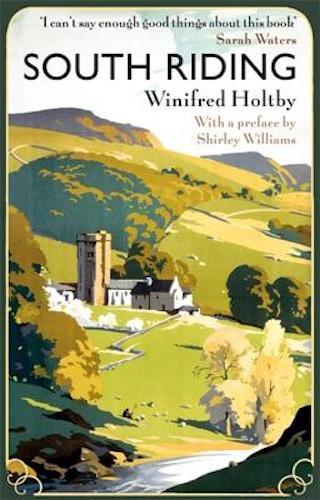
South Riding on Bookshop.org* and Amazon*
. . . . . . . . .
Every kind of human being
A score of other themes, each with its own individuality, are woven into the amazingly rich and complex pattern of South Riding. Some deal with people too near the poverty line to be able to indulge psychological eccentricities, some (e.g., the curious case of Alderman Snaith, who found relief from certain obsessions in lending Mr. Huggins money to manage his amours) are much less straightforward.
We meet every kind of human being from Mrs. Beddows, sane, sensible and hearty (but for one weakness), to Mrs. Carne, a helpless, hopeless lunatic.
And there are nearly as many moods. It is indeed a far cry from the songs and jokes perpetrated by Mrs. Hubbard’s “Jazz Octette” (“Take your feet off the table, Father, and give the cheese a chance!”) to the scene where Miss Barton confesses to Mrs. Beddows her love for Carne.
Judged by the facts recorded, the story cannot be called sanguine or cheerful. There is an unusually high rate of lunacy, illness, and general misfortune in this particular corner of England.
Sympathy with human nature
The author had an unquenchable belief in and sympathy with human nature; the courage and vitality that enabled her to cover so triumphantly her gigantic canvas blow like a high wind through the story, ventilating its most infected crannies.
Only at the end, I think, where the shadows disperse and the sky brightens, does the author’s hand lose a little of its sureness. Optimism and the will to optimism are different things, and Miss Holtby’s gallant effort to infer from her heroine’s change of heart a more hopeful future for society at large does not ring quite true as I have had the misfortune to read for a very long time.
Media adaptations of South Riding 1938: The first film adaptation 1974: Adaptation for Yorkshire Television 1999: The radio version was broadcast on BBC Radio 4 2011: BBC Television Series (three parts)More about South Riding by Winifred Holtby South Riding by Winifred Holtby – Goodreads South Riding by Winifred Holtby – The Guardian South Riding by Winifred Holtby -JacquiWine’s Journal
. . . . . . . . . .
*These are Bookshop Affiliate and Amazon Affiliate links. If a product is purchased by linking through, Literary Ladies Guide receives a modest commission, which helps maintain our site and helps it to continue growing!
The post South Riding by Winifred Holtby (1936) appeared first on Literary Ladies Guide.
June 6, 2022
Elizabeth X, or The Secret of Elizabeth by Vera Caspary
Prolific American author Vera Caspary’s last published novel, Elizabeth X, was released first in the U.K. in 1978, the year before her autobiography, The Secrets of Grown-ups. It was reissued in the U.S. the following year as The Secret of Elizabeth.
This analysis of Elizabeth X, or The Secret of Elizabeth by Vera Caspary is excerpted from A Girl Named Vera Can Never Tell a Lie: The Fiction of Vera Caspary by Francis Booth ©2022. Reprinted by permission.
We are back in familiar Wilkie Collins territory, with multiple narrators telling the same story from different angles. As with Collins’ The Woman in White and Caspary’s own Stranger Than Truth, but unlike Laura and Final Portrait, the narrators are listed in the contents at the beginning of the book, so we know in advance what to expect.
Echoes of The Woman in White
At the beginning of both Collins’ novel and Elizabeth X, the narrators find a mysterious woman dressed in white wandering down the road. Here is the scene from The Woman in White.
There, in the middle of the broad bright high road—there, as if it had that moment sprung out of the earth or dropped from the heaven—stood the figure of a solitary woman, dressed from head to foot in white garments, her face bent in a grave inquiry on mine, her hand pointing to the dark cloud over London, as I faced her.
I was far too seriously startled by the suddenness with which this extraordinary apparition stood before me, in the dead of night and in that lonely place, to ask what she wanted. The strange woman spoke first.
“Is that the road to London?” she said.
In Elizabeth X, a couple is driving down a road through a forest near Westport, Connecticut late at night when the wife sees a young woman in white wandering unsteadily; she wants to stop the car to help the distressed woman, but the husband is suspicious, thinking it may be a trap.
Among the dense foliage, a white shape moved like a specter, indistinct at first, then clearly seen, hidden again by thick brush, and after the car had rounded a curve, its headlights picked out a girl in a white dress. His foot remained steady on the accelerator
… City crime had crept into the countryside. Young women were said to carry guns. Better for a man to mind his own business in these parlous days … Although he doubted the wisdom of the act, he stopped beside the girl. Kate jumped out. “Can we give you a lift?”
The girl seemed startled, wary as an animal who has heard movement in the underbrush. Kate’s hand fell gently upon the girl’s bare arm. “You needn’t be afraid of us. We want to help you. Where do you want to go?”
There was no reply. The girl, clad in a white dress with arms and legs bare, shivered in the cool night air. She obeyed humbly when Allan told her to get into the back seat. “Where are you going?” he asked and was again rewarded with silence.
The male narrator in Collins’ The Woman in White on the other hand has no suspicions about the strange young woman he meets.
“What sort of a woman she was, and how she came to be out alone in the high road, an hour after midnight, I altogether failed to guess. The one thing of which I felt certain was, that the grossest of mankind could not have misconstrued her motive in speaking, even at that suspiciously late hour and in that suspiciously lonely place.”
Similarly, although the husband in Elizabeth X thinks the woman must be either “stoned or drunk,” the wife assumes she is an innocent victim.
The narrator of this first section of Caspary’s novel is neither the husband, Allan Royce, nor his wife Kate, but is merely a neighbor of the couple reporting on conversations he has had with Allan on a morning commuter train.
And, in case we have not yet got the connection with Wilkie Collins, Caspary makes her prim and extravagantly literary first narrator – whose late mother was a writer of mystery novels and who himself has a Ph.D. in nineteenth-century mystery stories – hammer home the point with no attempt at subtlety, delivering it in a rambling, stilted, almost euphuistic style reminiscent of Collins’ nineteenth-century prose as well as the rather precious manner of speaking of Waldo in Laura, based, as we know on Collins’ Count Fosco.
. . . . . . . . . .
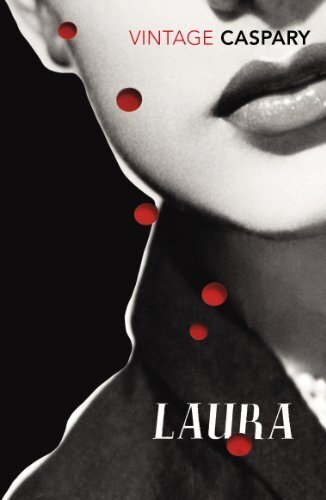
Laura by Vera Caspary
. . . . . . . . . .
Enter Chauncey GreenleafI think we can assume that Caspary, on her twentieth full-length novel and at the age of seventy-nine is relishing the layers of irony here, especially as she has saddled this first narrator with the unlikely name of Chauncey Greenleaf.
Having protested that he is incapable of creating a mystery story, Greenleaf immediately proceeds to do exactly that, explaining, like the narrators of Thelma and Evvie, that he does not have perfect or first-hand knowledge of the story at this stage. Chauncey even admits to us that some of what he is telling us is made up or assumed.
Kate Royce wants to take the mysterious woman home and look after her, and Allan wants to go to the police. “They’d book her for vagrancy or something, and she’d have a police record for the rest of her life. An innocent young girl,” says Kate “What makes you think she’s so innocent?” replies Allan. Under protest, he takes the girl back to their stunning designer house in the woods, which looks like a film set – Allan is a modernist architect.
Kate’s loss
Despite her glamorous house and enviable lifestyle, Kate is no Caspary woman. “Kate Royce had the correct Connecticut commuter’s wife appearance; tweed skirt, matching sweaters; a short string of pearls, ponytail.” We soon find out why she is so maternally concerned about the unknown girl.
“Allan recognized the sweetness and firmness that had been absent since that evil day when she had found her baby dead in its crib,” as Chauncey puts it. Ever the literary showoff, Chauncey tells us parenthetically, about Kate’s loss:
“I am reminded of an entry in Mary Shelley’s journal: Find my baby dead. Send for Hogg. Talk. A miserable day. In the evening read ‘Fall of the Jesuits’”
Kate even christens the amnesiac woman Elizabeth after her own dead baby. Having promised Allan that she will take the girl to the police the next day, Kate decides to keep her, a daughter substitute perhaps. She takes “Elizabeth” to her family doctor to be checked out; Dr. Greenspan is rather more thorough than is strictly necessary.
“There was no evidence of rape, but infinitely more startling was the fact that the girl was a virgin. Both Kate and Harvey Greenspan considered an unviolated hymen an anachronism in a girl whose exact age was undetermined, but who was certainly over twenty.”
Trying to uncover Elizabeth’s past
The Royces have brought in a psychiatrist to see if she can uncover Elizabeth’s past; the psychiatrist thinks her memory loss is a subconscious escape from something she is ashamed of.
Chauncey, like Kate but for different reasons, is so smitten that he cannot believe Elizabeth is anything other than an innocent ingénue. He quickly moves from being enamored to being possessive and proprietorial. Chauncey wants to remake her, new, from wet clay, to paint himself onto her wet canvas.
. . . . . . . . . .
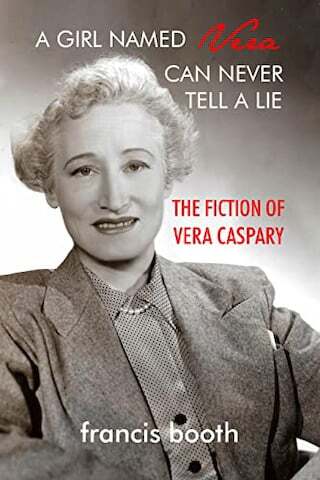
A Girl Named Vera Can Never Tell a Lie on Amazon (US)*
and *
. . . . . . . . . .
In the next chapter, “Leaves from a Notebook,” the narration is briefly taken over by Elizabeth herself. Elizabeth makes it quite clear in the notebook what she thinks about Chauncey’s proposal, which he blurted out when he was alone with her one day.
“Mr. Greenleaf asked me to marry him. Not exactly asked. He said if we were married no one could take me away. I cannot imagine being married to an old man. He must be forty at least. Maybe more.”
Chauncey is forty-nine.
Disturbing memories begin to surface
Elizabeth has been asked questions by the FBI who, think she may be on the run from some crime. In fact, she may — there are several young women on the FBI’s list of people wanted for grave crimes. And she does have flashes of something bad happening. “A dead man is lying on the floor. I see the pattern of streaks on a marble floor, but not the man’s face. Maybe he is not dead.”
To add to the mystery, Elizabeth starts dating a mysterious man, Rick Shannon, who turns up at the house and maybe a private eye but whose motives are not clear.
Kate takes over the narration in the next chapter, “The Private Life of an Amnesia Victim,” which is introduced by Chauncey who says that Kate can relate things he cannot know. Kate does not contradict him but does add extra detail.
“I have read what Chauncey has written and there is no need for me to repeat any of it, but there are many things he could not know. Like Elizabeth’s nightmares and her terrified reaction to blood and killing on television.”
Watching one of the violent programs on TV that Allan likes but Kate doesn’t, Elizabeth reacts very strongly. “I turned from the horror to see Elizabeth curled in the armchair, shrunken and as white as a ghost against the black leather upholstery. The look on her face is unforgettable.”
Is Elizabeth the fiancée of a multimillionaire?
Kate tells us among other things that a well-known multimillionaire, Gordon Hildebrandt, thinks Elizabeth is his fiancée Claire Foster and has asked Kate on the phone to look after her until he can get there – he is apparently far too busy with important business to come immediately and asks if there is a small airfield near to them so they can fly there in his private plane when he is ready.
Hildebrandt then effectively kidnaps Elizabeth and flies her to New York where he keeps her in his suite at the Waldorf Astoria, locked in a room while he conducts his important business; as with the wealthy alpha male husbands in The Husband, The Man Who Loved His Wife and Ruth, we are spared the details of their major financial dealings.
We find out the truth about this relationship in a section containing the letters of Hildebrandt’s lawyer to his wife during the kidnapping episode, of which he disapproves: Elizabeth is not and never has been Hildebrandt’s fiancée; she has never even known him, but we do not find this out until much later.
Hildebrandt’s actual fiancée has changed her mind about marrying him and disappeared; to save face he has claimed publicly that she was kidnapped and has apparently paid a large ransom, but all this was made up to protect his public image; Hildebrandt needed a woman to play the part and chose the similar-looking Elizabeth.
After a few days of being imprisoned in New York’s top hotel, the lawyer helps her escape and Elizabeth goes back to Kate.
. . . . . . . . . .

The Secret of Elizabeth on Bookshop.org* and Amazon*
. . . . . . . . . .
That leaves two parties claiming ownership of Elizabeth: a psychiatrist called Dr. Hyde – Kate keeps referring to him as Dr. Jekyll to keep the literary references coming – who claims she is Grace Dearborn, a disturbed woman who has escaped from the sanitarium which he runs.
Caspary drops a subtle hint that this may be true: later, when Elizabeth slowly starts to remember things, we find out the color of her room, probably another sly literary reference by Caspary to The Yellow Wallpaper by Charlotte Perkins Gilman.
“This is it. What I hoped and prayed for. Waking up. Remembering. Real, not a nightmare. But I think nightmares are real and real life is a nightmare. I am here. In this room, is a yellow room in Kate’s house. Elizabeth’s room, they call it. Please God let me stay Elizabeth.”
Is Elizabeth a senator’s daughter?
Elizabeth’s other possible backstory is that she is the daughter of a Senator from Kansas, though he is not claiming that his daughter, Gloria Dixon, is lost. Rick first spots the possible connection; it turns out that Rick is not what he seems and like everyone else he wants something from her.
Like Norman in The Gardenia, Rick is a newspaper reporter exploiting a woman with no memory for a story that he hopes will get him a full-time job with a national magazine. Rick is with Elizabeth when the moral fundamentalist senator Dixon appears on TV, accused of various improprieties; the look on Elizabeth’s face convinces Rick that she knows the Senator. He flies to Kansas to confront the man. Rick is met by the Senator’s housekeeper, Lucy Price.
Lucy Price
Lucy’s character seems to have been described in-depth for purely intertextual purposes – she has only one function in the plot, though it is a pivotal one. Later, when Elizabeth begins to regain her memory she tells us that “Miss Price was hired as my governess … Pricey is a white black woman—very beautiful, with eyes the pale green of peridots.”
Here, in what she probably expected would be her last novel, Caspary is referring us back to her first novel nearly fifty years earlier, The White Girl, and the subject of racism and “passing.”
Despite Lucy’s Master’s degree and her gold Phi Beta Kappa key, she has been held back by her race. Her role as governess immediately brings to mind – our mind as well as Rick’s – nineteenth-century novels of poor orphan girls making their way in the world, like perhaps Ruth, as written by another Elizabeth: Mrs. Gaskell.
Rick, suddenly becoming uncharacteristically literary, says of Miss Price:
“Her story was typical, the stereotype of an old-fashioned novel. Poverty, an unemployed father, a sick mother, tubercular sister. Lucy Price had been lucky in getting a job that might have been conceived by a Brontë sister or Daphne du Maurier.”
In some ways, Lucy is rather like Mrs. Danvers in Rebecca and her name perhaps concatenates the orphan’s Lucy Snowe from Villette and Fanny Price from Mansfield Park. Caspary is shamelessly and joyously squeezing in yet more references from her favorite classic British authors in this late and perhaps valedictory novel.
Caspary may even be thinking of Jean Rhys’s Wide Sargasso Sea (1966), her prequel to Jane Eyre, where Mr. Rochester’s wife, a Creole heiress, is locked away like Elizabeth for being “mad.”
And if we know our Jane Eyre well enough we may remember Mr. Rochester saying to her, “Little girl, a memory without blot or contamination must be an exquisite treasure – an inexhaustible source of purification; is it not?” which seems to sum up both Chauncey and Kate’s view of Elizabeth’s blank canvas.
So, which claimant is right? We know that the so-called Elizabeth is not Claire but is she, Grace or Gloria? Well, in fact, she is both. Senator Dixon is her father but has had her locked up in a sanitarium under a false name. Her sin was – according to her father – lust, compounded by murder.
Elizabeth carries one horrifying childhood memory that she has always wanted to get rid of and that may help explain her amnesia: one day Elizabeth caught her father in flagrant with her governess, mentor, and friend Lucy Price.
It was this experience that exposed her father to her as a monster and drove her to offer her virginity to the nearest available man: her cousin Hugh, her father’s assistant.
Who killed cousin Hugh?
But just as “Elizabeth” was about to give herself to Hugh, her father burst in on them in turn. What happened next is not entirely clear, even by the end of the novel, but Hugh ended up dead after a fight of some kind. The Senator claims his daughter killed her cousin Hugh; she, when she finally remembers, is convinced her father did it.
We are inclined to believe the Senator did do it because we know that Hugh had evidence to expose fraud by his boss, evidence which has now come out publicly. Elizabeth screams at him. “You’re scared. It wasn’t only that Hughie was ruining your little flower, it was what he knew about your lies and cheating and taking bribes and the filthy sex things you –”
Elizabeth’s father has had her locked up in the sanitarium, ostensibly to protect her from a murder charge but probably to keep her quiet. There she is subjected to terrifying treatments designed to break her down; this is apparently what led to her amnesia.
At one point Elizabeth goes back to Chauncey and tells him about her treatment in the sanitarium. She tells him that Dr. Hyde, during his twice-weekly treatments, tried to hypnotize her into believing that she had struck the blows that had killed Hughie.
“Elizabeth” takes off
Against all odds, Elizabeth gives her virginity to Chauncey, his coy confession making us cringe. “Although it may be indecorous, I shall state for the benefit of inexperienced readers that it is not unpleasant to bed a willing virgin.” But the next morning she has gone.
“I have not seen her since. She was not in my bed when I woke, nor in the guest room when I peeped in there before I hurried to catch the early train.”
Much later, Chauncey gets a present. It is from France, “from the Hermes shop on the Rue Faubourg St Honoré and contained a large crocodile traveling bag bearing my monogram in gold, and fitted with an assortment of brushes, combs, gold-topped jars, and crystal bottles; a typical gift of the rich, costly and far too heavy to be carried on a plane, thus utterly useless.”
He assumes it is from the former Elizabeth, staying with her mother in France but gets no reply to his letter. And that is the end of Elizabeth.
The lacuna she leaves behind her is however filled in one respect, with “the infant born nine months to the night that Kate and Allan took a lost girl into their home. As the child’s godfather, I held her in my arms when she was christened Elizabeth.”
The novel ends with a perfect definition of the psycho-thriller as invented and developed by Vera Caspary over a period of more than fifty years.
“Our recollections differ widely. To each of us, Elizabeth is an intensely personal symbol, the shadow of an unacknowledged need. We seldom speak of her nowadays, perhaps because she was dearest to us as a mystery.”
. . . . . . . . . .
Contributed by Francis Booth,* the author of several books on twentieth-century culture:
Amongst Those Left: The British Experimental Novel 1940-1960 (published by Dalkey Archive); Everybody I Can Think of Ever: Meetings That Made the Avant-Garde; Girls in Bloom: Coming of Age in the Mid-Twentieth Century Woman’s Novel; Text Acts: Twentieth-Century Literary Eroticism; and Comrades in Art: Revolutionary Art in America 1926-1938.
Francis has also published several novels: The Code 17 series, set in the Swinging London of the 1960s and featuring aristocratic spy Lady Laura Summers; Young adult fantasy series The Watchers; and Young Adult fantasy novel Mirror Mirror. Francis lives on the South Coast of England.
. . . . . . . . . .
*These are Bookshop Affiliate and Amazon Affiliate links. If a product is purchased by linking through, Literary Ladies Guide receives a modest commission, which helps maintain our site and helps it to continue growing!
The post Elizabeth X, or The Secret of Elizabeth by Vera Caspary appeared first on Literary Ladies Guide.
June 3, 2022
Excellent Women by Barbara Pym
British author Barbara Pym (1913 – 1980) was often compared to Jane Austen for her comedies of manner; she was called Britain’s “new Jane Austen.” Excellent Women was her second novel, published in England in 1952.
Barbara Pym’s novels explore manners and morals in village life with subtle, understated wit and keen insight into human nature that transcends their local flavor. The nine novels published in her lifetime are considered the Pym canon; there were four others published posthumously.
Many Pym devotees cite Excellent Women as their entry-point to her novels, and for legions of fans, it remains their favorite. Shirley Hazzard wrote of Barbara Pym:
“She is herself the poet of the lonely, the virtuous, the ironic; of the unostentatiously intelligent and witty; of the angelically self-effacing, with their diabolically clear gaze. Nothing escapes such persons; and they escape nothing.”
Oddly, after the book’s successful initial British publication, and its subsequent status as a true Pym classic, it was turned down by eighteen American and European publishers. It wasn’t published in the U.S. until 1978, at which time it was greeted with the enthusiasm it deserves. The book has gone through many editions since and is still in print.
. . . . . . . . . .
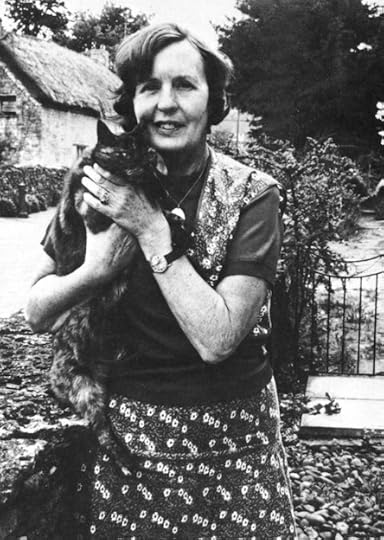
Learn more about Barbara Pym
. . . . . . . . . .
From the original review by Joyce W. Milkie in The Times and Democrat (Orangeburg, SC): “Pym’s Characters Are Credible.”
This is Georgian light fiction set in a comparatively modern setting. Understated and veddy, veddy British, Mildred Lathbury is almost unbelievable in some ways, as a member of the 20th Century gang. In others, she is credible and completely delightful.
Barbara Pym, most assuredly an English writer, wrote this book some time ago and it has just been reissued. For those who enjoy the light touch, the mannered tale, this is a gem of the first water, a delightful look at a way of life now almost gone. If you adore Jane Austen, you’ll delight in Pym’s books.
Mildred Lathbury, who narrates the story, is a spinster (and one gets the idea she doesn’t really like her unmarried state) who seems to have a number of eligible men around but none of them center on her. She is the daughter of a clergyman and is a “high church.”
She has ample means so she can devote her time to involvement in other people’s lives and in helping her “distressed gentlewomen.” She is one of those “excellent women” who help out other people but tend to be resignedly borne with by even those they help.
Mildred, who has more of a sense of humor and is more attractive than most of these “excellent women” tend to be, doesn’t really want to be numbered among these tedious people. She really would like to be married, romantically and ideally, but she just doesn’t know how to go about it.
She has a few heart flutters when a handsome ex-Navy officer and his wife move in downstairs. His wife, she thinks, doesn’t appreciate him. Then there is Julian, the clergyman at her church, who has his sister to care for him but succumbs to the lure of a glamorous widow and sorrows because he thinks Mildred is secretly in love with him. (She isn’t.)
There are other lives touching Mildred’s and she helps where she can and tries to keep hands off when she believes that’s the best thing.
One gets involved with Mildred, a charming and retiring character, and one hopes, sincerely, she may find that romantic attachment she so obviously craves but won’t bestir herself to promote.
Pym writes with cool clarity and with gentle, underplayed humor. Her people are credible and one does get involved with them, but Mildred is the one the reader cares the most about.
. . . . . . . . . . .
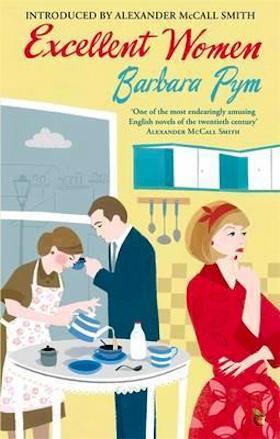
Excellent Women on Bookshop.org* and Amazon*
. . . . . . . . . . .
“I realized that one might love him secretly with no hope of encouragement, which can be very enjoyable for the young or inexperienced.”
. . . . . . . . . . .
“My thoughts went round and round and it occurred to me that if I ever wrote a novel it would be of the ‘stream of consciousness’ type and deal with an hour in the life of a woman at the sink.”
. . . . . . . . . . .
“Once you get into the habit of falling in love you will find that it happens quite often and means less and less.”
. . . . . . . . . . .
“There are some things too dreadful to be revealed, and it is even more dreadful how, in spite of our better instincts, we long to know about them.”
. . . . . . . . . . .
“I was so astonished that I could think of nothing to say, but wondered irrelevantly if I was to be caught with a teapot in my hand on every dramatic occasion.”
. . . . . . . . . . .
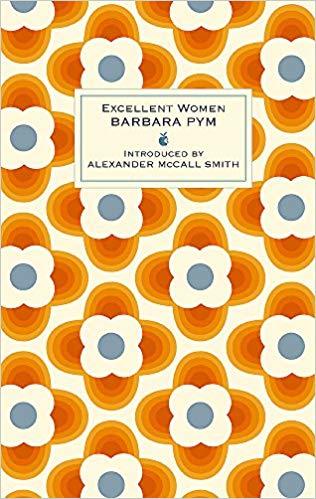
See more
Quotes from Excellent Women and Other Novels by Barbara Pym
. . . . . . . . . . .
. . . . . . . . . . .
*These are Bookshop Affiliate and Amazon Affiliate links. If a product is purchased by linking through, Literary Ladies Guide receives a modest commission, which helps maintain our site and helps it to continue growing!
The post Excellent Women by Barbara Pym appeared first on Literary Ladies Guide.
The River by Rumer Godden 1946)
The River by Rumer Godden, a 1946 novel, is a coming-of-age tale based on the author’s experiences growing up in the colonized Bengal region of India, now part of Bangladesh.
Like so many of Godden’s novels, this one has a cinematic flavor, and indeed, is one of the nine books by this prolific author to be adapted to film. In the late 1940s, Godden collaborated on the script for the film version of The River. It was directed by Jean Renoir and released in 1951.
The well-received film won an international award at the Venice Film Festival that year. It later became a great favorite of Martin Scorsese and later also influenced director Wes Anderson. It’s still considered a classic mid-century film.
Plot synopsis of The River by Rumer Godden
From the Open Road Media 2021 reprint edition:
“Facing harsh adult realities, a young English girl in India must leave childhood behind, in this masterful tale from a New York Times–bestselling author. The Ganges River runs through young Harriet’s world.
The eleven-year-old daughter of the British owner of a successful jute concern, she loves her life in Bengal, India, on the river’s edge, so far removed from the English boarding school she attended before the outbreak of hostilities in Europe.
Often left alone by an overworked father and preoccupied mother, Harriet is enchanted by the local festivals, colors, and vibrant life surrounding her. Now, as she stands on the brink of adulthood—too old to play childish games with her reckless little brother, Bogey, yet too young to be touched by such grown-up concerns as the faraway Second World War—a stranger’s unexpected arrival will rock her world.
When Captain John, a handsome soldier returning wounded from the battlefield, becomes her family’s new neighbor, Harriet is instantly entranced, beset by a rush of unfamiliar emotions: longing, jealousy, infatuation. But the inevitable change inherent in growing older may be too heavy a burden for a young girl to bear when it carries with it disappointment and heartbreaking loss.
Inspired by the author’s personal experiences as a child raised in India—and the basis for the acclaimed classic motion picture of the same name from French film director Jean Renoir—Rumer Godden’s The River is a lovely, moving portrayal of childhood’s end. Evocative, heartfelt, and bittersweet, it is a coming-of-age story without equal from a major twentieth-century novelist.”
. . . . . . . . .

The River on Bookshop.org and Amazon*
. . . . . . . . .
From the original review by Christine Boble Govan in the Chattanooga Daily Times, October 27, 1946: When I think of Rumer Godden’s style I think of jade and moonstones and smooth, polished natural wood. There is a clarity and a finish about it that is rare, and yet what she writes is always so skin to the earth and its miracles that it must inevitably be thought of in terms of the natural.
The river has become a symbol to mankind. Time and the river, the river of life-the constant flow and movement of a thing which remains the same in form-is bound to become a symbol. It is a thing upon which so much of man’s fortune depends, a thing on which he has so often placed his dreams.
“Harriet’s river was a great, slowly moving, mile-wide river between banks of mud and white sand, with fields flat to the horizon, just fields and rice fields under a weight of blue sky.The river emptied itself, through the delta, into the Bay of Bengal, its final sea.”
The story of Harriet’s growing up by the river might, as Miss Godden points out, have taken place anywhere with a slight change of scenery. As it is, her story is full of the flavor of India brushed in so that in the book it is what it was in Harriet’s life, an integral, unobtrusive but part.
A little girl grows up when she becomes aware of pain and human cruelty, of birth and death, and of that ephemeral bliss which is a part of being aware.
She grows up quietly like a flower, but within her are the mystery, the beauty, the promise, and the vulnerability of a fragile plant. Rumer Godden, with her impeccable style and her ability to create feeling quietly and profoundly, has given us this intimate and tender story of one little girl’s growing.
. . . . . . . . .
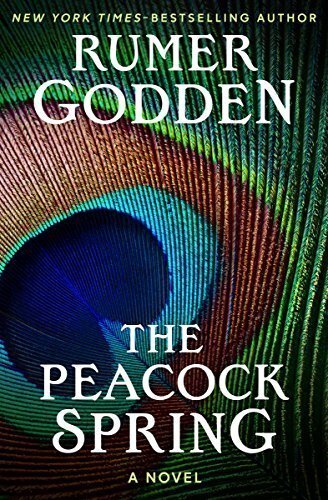
You may also enjoy The Peacock Spring by Rumer Godden,
another coming-of-age novel set in India
. . . . . . . . .
. . . . . . . . .
*These are Bookshop Affiliate and Amazon Affiliate links. If a product is purchased by linking through, Literary Ladies Guide receives a modest commission, which helps maintain our site and helps it to continue growing!
The post The River by Rumer Godden 1946) appeared first on Literary Ladies Guide.
May 31, 2022
Vera Caspary’s The Man Who Loved his Wife (& Other Diary-Driven Fiction)
“The trouble with being the author of one of the all-time classics of suspense is that people keep expecting you to be that good again; and I suppose I must regretfully say that Vera Caspary’s The Man Who Loved His Wife is no Laura,” began Anthony Boucher’s February 20, 1966 review in the New York Times.
“But it is an intelligent and largely persuasive novel of a laryngectomy subject with a powerful death wish,” continued Boucher’s review, “ and was it himself or one of his family that fulfilled the desire? I suspect that Mrs. Caspary has cast as a whodunit a story that could have been more effective without the puzzle element; but it still is well worth one’s attention – especially for her unflagging skill in creating unpleasant people.”
This look Caspary’s The Man Who Loved His Wife (1966) and other classic fiction in which diaries are a central plot element, is excerpted from A Girl Named Vera Can Never Tell a Lie: The Fiction of Vera Caspary by Francis Booth ©2022. Reprinted by permission.
A secret diary kept by a suspicious husband
From the 1966 Dell books edition:
“This is a brilliantly thrilling novel about a sick man who keeps a secret diary in which he records all the suspicions and highly charged emotions he feels for his beautiful young wife.
The story reaches its climax when the wife, refusing to lie, admits to one act of infidelity. Her confession induces in her husband fresh ravages of distrust and mental agony. Shortly afterwards he is found dead of suffocation.
The secret diary … finds its way mysteriously into the hands of the police, where its contents take on a seriousness that his wife could never have imagined. She finds herself in fact suspected of her husband’s murder.
If in fact he was murdered, could it have been by the wife’s lover, or perhaps by the dead man’s impecunious daughter or her unsuccessful husband? How, in any case, did the diary reach the police?
With absolute mastery of her theme, and in an atmosphere of mounting suspense, Vera Caspary builds up to a surprise climax with all the enchantment and skill for which she is famous.”
. . . . . . . . .
 Learn more about Vera Caspary
Learn more about Vera Caspary
. . . . . . . . .
In a diary, a woman – or less usually a man – young or old, can say things she could not confide even to her closest female friend, assuming the diary will never be read by anybody else.
But in a novel the diary is bound to be found and read, probably by the worst possible person and to tragic effect – as with Chekhov’s gun, if an author introduces a secret diary in chapter one, it will inevitably be discovered and lead to dire consequences later on.
The diary, which is at the center of The Man Who Loved His Wife, is sometimes said to be a particularly feminine literary form and certainly most of the literary diaries we have were written by women, going all the way back to The Diary of Lady Murasaki and The Pillow Book of Sei Shonagon, both written in Japan around the year 1000 CE.
Hundreds of years later, the British novelist Fanny Burney started her wildly successful writing career as a teenager in 1768 with “a Journal in which I must confess my every thought, must open my whole Heart!”
Burney’s young female friend, on being told of the journal’s existence, “says that it is the most dangerous employment young persons can have – it makes them often record things which ought not to be recorded, but instantly forgot. I told her, that as my Journal was solely for my own perusal, nobody could in justice, or even in sense, be angry or displeased at my writing anything.”
But of course, this is naïve. In the novel, the finding of a diary and the disclosure of its secrets is often the driver of the plot; as in real life, the revealing of a woman’s diary – or in this case a man’s – can lead to unintended, perhaps tragic consequences.
Like Burney in real life, many teenagers in female coming-of-age novels keep diaries, often written in journals which are of themselves beautiful objects. These include:
Charlie by Kate Chopin (1900)Invitation to the Waltz (1932)The Death of the Heart by Elizabeth Bowen (1938)A Tree Grows in Brooklyn by Betty Smith (1943)The Friendly Young Ladies by Mary Renault (1944)I Capture the Castle, by Dodie Smith (1948)Hangsaman, by Shirley Jackson; (1951)A Diary of Love by Maude Hutchins (1953)An Episode of Sparrow, by Rumer Godden (1956)Gentlemen Prefer Blondes by Anita Loos (1926)
The plot-driving diary in The Man Who Loved His Wife, which is given to Fletcher Strode as a present by his wife Elaine, is a beauty too, “a good thick book, beautifully bound in dark green Morocco stamped with his initials.”
In Rosamund Lehmann’s Invitation to the Waltz Olivia decides to start hers straightaway “to keep a record of my inmost real-self thoughts. Perhaps it will help me to find out what I really am like: horrid, I know; selfish, conceited, and material minded.”
But Olivia has good advice for journal writers, ignored by Fanny Burney, Fletcher Strode, and most diary-keeping literary characters:
“Advice to Young Journal Keepers. Be lenient with yourself. Conceal your worst faults, leave out your most shameful thoughts, actions and temptations. Give yourself all the good and interesting qualities you want and haven’t got. If you should die young, what comfort would it be to your relatives to read the truth and have to say: It is not a pearl we have lost, but a swine?”
In Anne Brontë’s proto-feminist novel The Tenant of Wildfell Hall, Helen Graham gives Gilbert her diary, which proves she is married and details her sadistic husband’s descent into drunkenness and debauchery. The Brontës, especially Emily, wrote illustrated diaries. In her Wuthering Heights, Lockwood first encounters Catherine through notes she made in her books. “Some were detached sentences; other parts took the form of a regular diary, scrawled in an unformed, childish hand.”
Elizabeth Gaskell, Dorothy Wordsworth, and Mary Shelley are among other women writers of the time who kept diaries that were later seen as serious literature in their own right, as was much later Anaïs Nin, whose diaries were first published in 1966, the same year as Caspary’s The Man Who Loved His Wife.
Vera Caspary’s Laura and Stranger than Truth both took Wilkie Collins’ The Woman in White as an inspiration; in The Man Who Loved His Wife she is perhaps borrowing from Collins again. In The Woman in White, Collins uses Marian Halcombe’s diary as a narrative medium. Count Fosco – the inspiration for Waldo in Laura – reads it surreptitiously.
. . . . . . . . . .

A Girl Named Vera Can Never Tell a Lie on Amazon (US)*
and *
. . . . . . . . . .
The Caspary woman in The Man Who Loved His Wife is twenty-eight-year-old Elaine Guardino, second wife of wealthy businessman and alpha male Fletcher Strode. Fletcher, a word meaning a person who makes arrows, is very much the kind of man who “strode” through life, until his illness struck.
Elaine, a former model who is nineteen years Fletcher’s junior, had “a madness for living, spent her energy and her earnings with a zest that had been due not simply to youth, but to a freedom of spirit which he had never before found, nor even expected, in a woman.”
Their friends on both sides think they are mismatched, and not just because of the age difference.
“Her friends considered him the stereotype of the self-made man, a show-off who expressed himself by conspicuous spending and loud talk. His cronies were sure that he would never be able to live contentedly with a highbrow who talked about ambivalence, Shostakovich, existentialism and Martha Graham.”
Elaine was born to highbrow parents: even the ultimate man’s man Fletcher recognizes her name as coming from Tennyson’s Idylls – he had to do it at school along with Emerson’s essays – and she tells him how it originated in the first meeting of her academic, artistic parents in London.
“She told him that her mother had been working on illustrations for a children’s edition of The Idylls when she met Professor Guardino.
‘It was a pick-up. At the Tate. Mother had gone to London to study the Pre-Raphaelites and set up her easel before Burne-Jones, and Papa was a refugee from Rome and was waiting for his American visa. He had thought of translating Blake into Italian and was looking at the lithographs. But he never did. Blake, I mean. He always said mother took his mind of the project. You see, it was inevitable that they named me Elaine.’”
But Elaine is no cold, aloof intellectual: “Fletcher Strode had never before met a girl who could be, at the same time, so refined and so lusty.” She is refined yet lusty, a perfect combination for a Caspary woman.
Jealousy rears its head
Despite the concerns of their friends, Fletcher and Elaine have a very satisfying and happy marriage until Fletcher contracts cancer of the throat and has to have his larynx removed. This loud, vocal man, now silenced, feels emasculated.
“Aware of the frustrations of a young woman tied to an afflicted man, he recognized in her every sigh and silence the needs of a young woman’s passionate nature. When he had been able to satisfy her, Fletcher had enjoyed the spectacle of her charm for other men, and relished his triumph over her younger admirers. Now there was no solace for castrate pride.”
Elaine’s attractiveness, “the jets that sparked out of men’s eyes at the sight of her rounded limbs, the rise of her breasts, the delicious curves of hip and buttock,” now torment him. “He was determined that no other man should possess his lovable wife.”
. . . . . . . . . .

The Man Who Loved His Wife by Vera Caspary
on Bookshop.org* and Amazon*
. . . . . . . . . .
Fletcher contemplates suicide. “He pondered it constantly, considered various methods, suffered the pain of poison, the terror of drowning, the stink of gas, the dizziness of the long plunge, the shock of gunfire.”
In his fantasy, Fletcher imagines his suicide appearing to the outside world as murder – committed by his wife. He starts to write his thoughts in the diary Elaine bought him, for which he buys a new Yale lock.
“The diary was also locked away. To show that she respected his privacy, Elaine asked no questions. . . It was beyond imagining that into this secret volume he was writing her doom.”
But he is. “How easy would it be to end it all with a man who breathes through a hole in his neck. Is she trying to work up the courage?” he writes. And “to love a woman who dreams about being rid of you. I live in hell.”
Fletcher does not want Elaine to be executed for his murder but prefers to “foresee her future in a woman’s jail where her beauty would fade, her sparkle dim, where she would grow old and stale, before, if ever again, she lay with a man.”
When Fletcher is out one day, Elaine is visited by the man who used to own the house in Los Angeles which she has bought and refurbished for Fletcher to give him peace and privacy. He is a doctor, Ralph Julian. They become friends, and eventually lovers.
“They made love in silence with no words of passion, no moans of rapture. Her lover was ardent and experienced, but Elaine felt delight less than the cessation of throbbing need.”
An failed attempt at recapturing passion
Ralph visits the house one day while Fletcher’s needy daughter Cindy – who is not much younger than Elaine – and her worthless, money-grabbing husband Don are visiting and are sitting around the pool. Fletcher compares his magnificent physique to the younger men’s puny one. “The sense of size and masculinity restored Fletcher’s temper.”
That night, Elaine comes to his bedroom; Fletcher is ready to make love to her.
“On a high wave of elation, the conquering male who had shown up two inferior younger men, he had chosen his best pyjamas, opened a bottle of French cologne, combed his hair, and in the mirror found a man. The surge of youth was strong. He strutted down the short corridor. This was to be the night of the miracle, the end of anxiety, the fulfilment promised by doctors, the reward deserved by his loyal wife.”
A although Elaine says and does all the right things – “you’re such a beautiful man. You’ve got a wonderful body.” – it doesn’t happen. “Nothing came of it. ‘I’m sorry,’ Elaine said, as always taking upon herself to blame for the failure.”
. . . . . . . . .
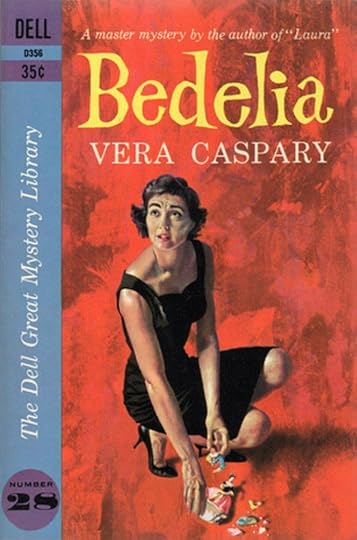
You may also enjoy: Bedelia by Vera Caspary
. . . . . . . . .
Fletcher twists the facts in the diary to make things look bad for Elaine: “she came to bring the sleeping pills and when I tried to make love, she let me know she was not interested.” Fletcher has been stashing away the sleeping pills Elaine gives him every night to make it look as though he is contemplating suicide.
Son-in-law Don flirts outrageously with Elaine and she does not do enough to put him off; Fletcher accuses her of having an affair with him, though he is a long way beneath her in any measure of sexual attraction.
She denies the accusation but admits she has had an affair though she refuses to tell Fletcher who the man was; now, because of his wife’s infidelity, he has a reason to commit suicide and make it look as though Elaine killed him so she can be with her lover.
At the same time, Don and Cindy want to buy a house and she asks her father for money, but self-made success Fletcher tells them they must make their own way. Cindy believes that if her father dies, all the money will come to her, so now she has a reason to murder Fletcher too.
Fletcher’s suspicious death—spoilers ahead
Then Fletcher, “the man who loved his wife,” really does die. At first everyone assumes it was suicide, that he took the sleeping pills. But the autopsy shows he didn’t – he was suffocated. Because he had to breathe through the tube in his throat, Fletcher could easily have been murdered by blocking up the hole – the pathologist thinks it extremely unlikely he would have committed suicide this way because when people try to suffocate themselves they always stop at the last moment.
Don shows the diary to the police, hoping that it will point to Elaine. It does. “I saw through her devious plans. She may not be brave enough to strike the blow herself, so she is trying to provoke me to do it myself. This thought saved my life. I refuse to make it easy for her.”
In the end, what gives Elaine away is the plastic bag that covered the dry-cleaning which turns out to be the murder weapon; one of the police officers calls that kind of bag “a cheap suicide.”
“‘A cheap suicide,” she said bitterly. ‘That’s what everyone would have believed, the suicide of a man who wanted passionately,’ the word affected her, she clasped her hands under her chin, ‘to die’ . . .
‘He wanted so much to die. I knew. For such a long time, Ralph. I knew at night when I’d go in and look at him asleep. He didn’t want to wake up. Ever! . . . But I knew I couldn’t. Ever. I could never leave him, and it would go on and on like that. I wanted to be free.’
The far-of cry sounded again, but whether it was in her head or on a street below the hill, she could not tell. Free? This, too, was illusion. No matter what her lawyer pleaded, a jury decided, a judge decreed, there would never be a day without memory, nor a night free of his ghost. Fletcher Strode would always possess her.”
. . . . . . . . . . .
Contributed by Francis Booth,* the author of several books on twentieth-century culture:
Amongst Those Left: The British Experimental Novel 1940-1960 (published by Dalkey Archive); Everybody I Can Think of Ever: Meetings That Made the Avant-Garde; Girls in Bloom: Coming of Age in the Mid-Twentieth Century Woman’s Novel; Text Acts: Twentieth Century Literary Eroticism; and Comrades in Art: Revolutionary Art in America 1926-1938.
Francis has also published several novels: The Code 17 series, set in the Swinging London of the 1960s and featuring aristocratic spy Lady Laura Summers; Young adult fantasy series The Watchers; and Young adult fantasy novel Mirror Mirror. Francis lives on the South Coast of England.
. . . . . . . . . .
*These are Bookshop Affiliate and Amazon Affiliate links. If a product is purchased by linking through, Literary Ladies Guide receives a modest commission, which helps maintain our site and helps it to continue growing!
The post Vera Caspary’s The Man Who Loved his Wife (& Other Diary-Driven Fiction) appeared first on Literary Ladies Guide.
May 30, 2022
Myself vs. Myself: Save Me the Waltz and Other Writings of Zelda Fitzgerald
Zelda Sayre Fitzgerald (1900 – 1948) is best known for two things: as the wife of celebrated writer F. Scott Fitzgerald, and for being the first true Jazz Age flapper and an icon of the new post-World War One era. However, she was also a talented writer, painter, and dancer in her own right. Here, we’ll explore Save Me the Waltz and other writings of Zelda Fitzgerald, which certainly deserve a fresh look.
Struggling first against the excesses of her own Roaring Twenties lifestyle and then against severe mental illness, Zelda never achieved the critical success of her husband nor had the chance to fully develop her skills. According to her daughter Frances (Scottie) Fitzgerald:
“It was my mother’s misfortune to have been born with the ability to write, to dance, and to paint, and then never to have acquired the discipline to make her talent work for, rather than against, her.”
It is only relatively recently that her creative achievements, and her writing, in particular, are starting to be revisited and re-examined.
The search for a creative outlet
Throughout the 1920s, Zelda and Scott were one of the most famous Jazz Age couples of the era. They had lived the high life in New York and had then shifted across the Atlantic, following the tide of so many other Americans seeking the relative artistic and sensual freedom that France offered.
Soon they were riding the rollercoaster of parties, alcohol, infidelity, and excess in Paris and on the Riviera. Scott was enjoying his success, busy writing the short stories that paid some of the bills and working on the next novel, but Zelda was becoming increasingly frustrated at her own lack of a creative outlet.
As a child and teenager, Zelda had been an accomplished dancer. She had also written a few short “guest celebrity” pieces early in her marriage, including a review of Scott’s novel The Beautiful and the Damned, but as a woman and wife of a famous author, she was not expected to have the talent of her own. However, Zelda found that she had no desire to be simply a wife and mother and muse to her husband.
In 1927, at the age of twenty-seven, Zelda started taking ballet lessons again. She studied with notable teachers including Lubov Egorova in Paris, and it soon became an obsession that preoccupied her for up to eight hours a day, often to the detriment of her relationships with her husband and daughter.
She installed a large mirror and a barre at home where, in addition to the time spent at the studio, she would practice for hours.
These lessons were reluctantly paid for by Scott, an arrangement which Zelda also disliked intensely. To support herself and to be able to pay for her own lessons, she began to write again. Articles and short stories including Our Movie Queen, Miss Ella, and A Couple of Nuts were published in Harper’s Weekly, The Smart Set, and The Saturday Evening Post.
Most of the stories appeared under her husband’s name. The F. Scott Fitzgerald byline fetched a far higher price and made it easier to get pieces accepted, but it also meant that Zelda struggled to establish any kind of writing the identity of her own.
Zelda also faced challenges in the ballet studio. In her mid-twenties, she was too old to achieve her dream of becoming a prima ballerina, but she could still have made a career out of it had her health not failed.
In the autumn of 1929, she was offered a salaried position with the San Carlo Opera Ballet Company in Naples, dancing a solo role initially in Aida with more solos to follow during the season, but had to decline the offer as she was not mentally capable of fulfilling the demanding contract.
. . . . . . . . .
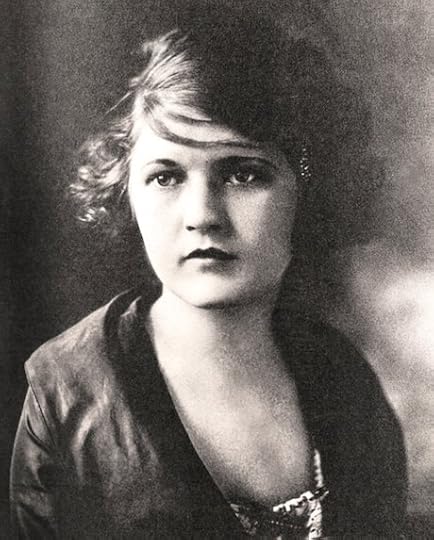
More about Zelda Fitzgerald
. . . . . . . . .
Within months, she was hospitalized with hallucinations, anxiety, depression, suicidal thoughts, and exhaustion. She discharged herself against her doctor’s advice, desperate to return to the ballet studio, but within weeks she had relapsed.
This time she was sent to a hospital in Switzerland, where the doctors recommended psychological treatment. After seeing a highly sought-after psychiatrist, Dr. Oscar Forel, she was diagnosed with schizophrenia.
She arrived at the clinic in Switzerland in June 1930 and stayed for over a year. The rest of her life would be spent in and out of hospitals and sanatoriums in both Europe and the U.S.
Save Me the Waltz and tensions with Scott
In early 1932, she was a patient at the Phipps Clinic outside Baltimore in Maryland. It was here that she wrote the first draft of her only novel, Save Me The Waltz, in just two months. It tells the story of Alabama Beggs and her painter husband David, whose artistic success and flamboyant lifestyle lift them from their Southern roots into a whirlwind of New York celebrity. It’s a clear roman à clef based on her own life and, to a lesser extent, that of her husband.
It was far from her first foray into writing fiction, but it was the first time she had ever written anything and sent it to a publisher without showing it to her husband beforehand.
She chose Max Perkins, her husband’s own editor, writing to him, “Scott completely being absorbed in his own [novel] has not seen it, so I am completely in the dark as to its possible merits but naturally terribly anxious that you should like it.”
Zelda wanted desperately to be taken seriously as a writer, and for the first time wanted her work to be evaluated on its own merits, without her husband’s intervention, opinion, or the use of his name.
When Scott did see the novel soon after, he was furious. He wrote to Zelda’s doctor accusing her of plagiarizing several ideas from his current novel-in-progress, which would become Tender Is the Night — “literally one whole section of her novel is an imitation of it, of its rhythm, materials…” — and of exposing too much of his private life.
He was also angry that she had named one of her main characters Amory Blaine, a name that her husband had also used in This Side of Paradise. Scott fumed, “This mixture of fact and fiction is calculated to ruin us both … my God, my books made her a legend and her single intention in this somewhat thin portrait is to make me a nonentity.”
Zelda wrote to Scott to try and explain why she had not sent him the manuscript first:
“Purposely I didn’t — knowing that you were working on your own and honestly feeling that I had no right to interrupt you to ask for a serious opinion. Also, I know that Max will not want it and I prefer to do the corrections after having his opinion …
I was also afraid we might have touched on the same material. Also, feeling it to be a dubious production due to my own instability I did not want a scathing criticism such as you to have mercilessly — if for my own good given my last stories, poor things. I have had enough discouragement, generally, and could scream with that sense of inertia that hovers over my life and everything I do.”
. . . . . . . . . .
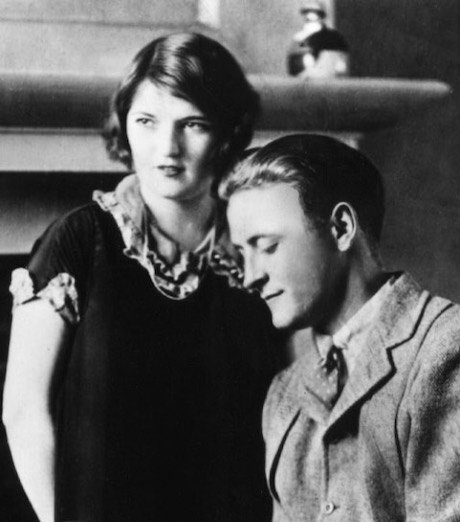
. . . . . . . . . .
Fantasy versus realityIt wasn’t the first time that the lines between fact and fiction had become blurred. Scott, too, often conflated fantasy and reality in his novels: he once said to Malcolm Crowley, “Sometimes I don’t know whether Zelda isn’t a character that I created myself.”
In her 1922 review of her husband’s novel The Beautiful and Damned, Zelda had written:
“It seems to me that on one page I recognized a portion of an old diary of mine which mysteriously disappeared shortly after my marriage, and also scraps of letters which, though considerably edited sound to me vaguely familiar. In fact, Mr. Fitzgerald — I believe that is how he spells his name — seems to believe that plagiarism begins at home.”
Indeed, Scott used lines from Zelda’s letters and diaries throughout his writing career, most notably in This Side of Paradise, The Beautiful and Damned, The Great Gatsby, and Tender Is the Night.
Scott, on the other hand, didn’t appreciate Zelda doing the same thing. While his side of the correspondence has been lost, he must have sent Zelda a curt reply to her explanatory letter, because, in her next letter to him, Zelda wrote:
“I glad[ly] submit to anything you want about the book or anything else…However, I would like you to thoroughly understand that my revision will be made on an aesthetic basis: that the other material which I will select is nevertheless legitimate stuff that has cost me a pretty emotional penny to amass and which I intend to use when I can get the tranquility of spirit necessary to write the story of myself versus myself.”
Zelda’s writing style
Over the next few months, Zelda revised the novel, this time with some input from Scott — although how much he influenced the revisions is unclear, as the original drafts have been lost. His own opinion of the novel varied dramatically, sometimes feeling that it was “perhaps a very good novel” and other times claiming that it was “a bad book.”
In part, then, it’s Zelda’s story the way that her husband wanted it to be told, but there are still elements that are very different from Scott’s and that can therefore be assumed are Zelda’s unique style — lush description, vivid colors, a southern summer brought to life in dripping heat and suffocating magnolias, the anguish and pain of obsession and alcoholism, and the frantic search for an identity outside of marriage.
The rich prose style has also been connected to Surrealism, in its attempts to disrupt realism by creating unexpected connections. In the novel, Alabama’s first kiss with David becomes a deep, nightmarish dive into the frontal cortex of his brain:
“She crawled into the friendly cave of his ear. The area inside was grey and ghostly classic as she stared about the deep trenches of the cerebellum. There was not a growth nor a flowery substance to break those smooth convolutions, just the puffy rise of sleek grey matter…”
Edmund Wilson likened it to the way Zelda spoke:
“She talked with so spontaneous a color and wit — almost exactly in the way that she wrote — that I very soon ceased to be troubled by the fact that the conversation was in the nature of the free association of ideas and one could never follow up anything. I have rarely known a woman who expressed herself so delightfully and freshly; she had no ready-made phrases on the one hand and made no straining for effect on the other.”
. . . . . . . . . .

Save Me the Waltz on Bookshop.org * and Amazon *
. . . . . . . . . .
Publication of Save Me the Waltz and subsequent writingsSave Me the Waltz was finally published in 1932 in a print run of likely no more than 3,000 copies. Only around 1,200 sold, and the novel went out of print after this first run.
Its publication did not ease any of the tensions between the Fitzgeralds. Zelda wanted to continue to write, while Scott told her she was “a third-rate writer and a third-rate ballet dancer … I am a professional writer, with a huge following. I am the highest-paid short story writer in the world.”
Zelda did start another novel, Caesar’s Things, and worked on it intermittently for the rest of her life. It never came to anything. She also turned to scriptwriting and attempted to produce a play called Scandalabra, described as a fantasy farce in a prologue and three acts.
Having been forbidden by Scott to use any autobiographical material that might coincide with what he wanted to use for Tender Is the Night, Zelda struggled even for a storyline. It was performed by a small Baltimore theatre company in 1933, but its rambling banter only confused the critics. Still mentally unstable, in and out of psychiatric clinics, and at odds with her husband much of the time, Zelda then turned to paint instead.
Zelda’s Legacy
Save Me the Waltz was republished by Southern Illinois Press in 1967 (it required some 550 spelling and grammar corrections), and then again by the University of Alabama in 1991 in The Collected Writings of Zelda Fitzgerald.
More recently, it has been reissued by Handheld Press. However, interest in Zelda’s writing and life has only really surged since the 2013 film adaptation of The Great Gatsby. Several novels have been based on her life.
One of them, Z: A Novel of Zelda Fitzgerald by Therese Anne Fowler, has also been made into an Amazon Prime original series called The Beginning of Everything.
There have also been more scholarly explorations of Zelda’s work, including The Subversive Art of Zelda Fitzgerald by Deborah Pike, which takes Zelda out of her husband’s shadow and places her work alongside other female writers and painters of the time such as Leonora Carrington.
Rightly or wrongly, there has been a tendency to give her the label of feminist, and there has been endless debate over the reasons for her lack of creative success. Many like to blame her husband, while an argument has also been put forward that she was constrained from the start by the era in which she was born.
The idea of Zelda as a woman trapped by circumstance has been dismissed by her daughter, who argued that viewing Zelda as a “classic ‘put-down’ wife whose efforts to express her artistic nature were thwarted by a typically male chauvinist husband…is not, in my opinion, accurate.”
However she is defined, perhaps her greatest achievement was summed up by Therese Anne Fowler, who wrote:
“Here we have a woman whose talents and energy and intellect should have made her a brilliant success, who was determined to be an accomplished artist, writer, and ballet dancer in an era where married women were supposed to be wives and mothers, period.”
Contributed by Elodie Barnes. Elodie is a writer and editor with a serious case of wanderlust. Her short fiction has been widely published online, and is included in the Best Small Fictions 2022 Anthology published by Sonder Press. She is Books & Creative Writing Editor at Lucy Writers Platform, she is also co-facilitating What the Water Gave Us, an Arts Council England-funded anthology of emerging women writers from migrant backgrounds. She is currently working on a collection of short stories, and when not writing can usually be found planning the next trip abroad, or daydreaming her way back to 1920s Paris. Find her online at Elodie Rose Barnes.
Further reading:
Save Me the Waltz by Zelda Fitzgerald, Handheld Press, 2018The Collected Writings of Zelda Fitzgerald, ed. Matthew J. Bruccoli, University of Alabama Press, 1997 (3rd ed)Zelda Fitzgerald: Her Voice in Paradise by Sally Cline, John Murray, 2003Dear Scott, Dearest Zelda: The Love Letters of F. Scott and Zelda Fitzgerald, ed. by Jackson R. Bryer and Cathy W. Barks, Bloomsbury, 2003Z: A Novel of Zelda Fitzgerald by Therese Anne Fowler, Two Roads Press, 2013. . . . . . . . . .
*These are Bookshop Affiliate and Amazon Affiliate links. If a product is purchased by linking through, Literary Ladies Guide receives a modest commission, which helps maintain our site and helps it to continue growing!
The post Myself vs. Myself: Save Me the Waltz and Other Writings of Zelda Fitzgerald appeared first on Literary Ladies Guide.
May 28, 2022
Jane Austen’s Final Days — Her Illness, Courage, and Death
Jane Austen by Sarah Fanny Malden (1889) is a valuable resource on the life and work of the beloved British author from the perspective of the late 19th century. The following excerpt describes Jane Austen’s final days —her illness, the courage she displayed, and her death.
Persuasion, the last novel Austen worked on prior to her death, and Northanger Abbey, her first completed novel, were both published six months after her death in 1817.
Mrs. Malden said of her sources, “The writer wishes to express her obligations to Lord Brabourne and Mr. C. Austen Leigh for their kind permission to make use of the Memoir and Letters of their gifted relative, which has been her principal authorities for this work.”
The 1889 publication of Malden’s Jane Austen was part of an Eminent Women series published by W.H. Allen & Co., London. The following excerpt is in the public domain.
Emma was the last work that Jane saw published
Emma was the last of her works that Jane Austen lived to see published; and despite the compliments, she received upon it, and the pleasure they gave her, its publication had sad associations for her.
Her brother, Henry Austen, had become ill while Jane was busy bringing out the novel, and it had been very sudden and serious. At first, Jane was alone with him, but, as the danger increased with alarming rapidity, she sent for the other members of the family.
They all arrived as quickly as was possible in those days when locomotion was so difficult; but Henry was at death’s door before they could get to him, and for many days he lay between life and death. He recovered eventually.
The strain and anxiety told much upon Jane, and she was still in a very low nervous state when fresh trouble came upon her family. Henry, who had tried several professions, and had been unable to establish himself in any, had for some time past been a partner in a bank, which now went broke. Many of the Austen family besides himself were involved in the loss.
. . . . . . . .
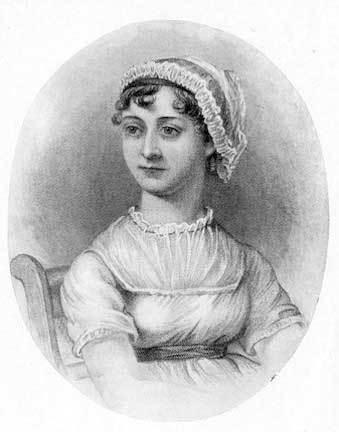
Learn more about Jane Austen
. . . . . . . .
Any family trouble was always deeply felt by Jane, and this came upon her when she was quite unfit for any fresh trial. Her health and spirits, which were already much weakened, sank perceptibly, and though she was anything but nervous about herself, and seldom mentioned her own health in her letters, she was evidently very far from well.
In 1816 one of her nieces had written to her with earnest inquiries after her health, in answer to which Jane replied,
“Many thanks for your kind care of my health. I certainly have not been well for many weeks, and about a week ago I was very poorly. I have had a good deal of fever at times and indifferent nights; but I am considerably better now, and am recovering my looks a little, which have been bad enough — black and white and every wrong colour. I must not depend upon being ever very blooming again. Sickness is a dangerous indulgence at my time of life.”
In the same making-the-best-of-it spirit, she wrote about this time to her brother Charles: ‘I live upstairs for the present and am coddled. I am the only one of the party who has been so silly, but a weak body must excuse weak nerves.’”
Increasing discomfort soon convinced her that she was not as near recovery as she had hoped, and though she was so cheerful before her family that they could not tell whether she was alarmed or not, before others she sometimes allowed herself to relax in this watchful self-control.
While staying with some old friends in scenes that were very familiar to her, they were struck by the way in which she spoke and acted as though she never expected to be there again, and the visible failure in her health greatly alarmed them.
Her letters, too, became sadder in tone, and in one of them the depression was so evident that she pulls herself up with the remark, “But I am getting too near complaint; it has been the appointment of God, however secondary causes may have operated.”
In the summer of 1816, she was able to pay a visit — which she must have known would be her last — to the old home at Steventon; and when she returned to Chawton, she continued to work at Persuasion, though under great difficulty from bodily weakness.
It may have been the consciousness of approaching death that touched that exquisite novel — the last she ever completed — with the wonderful pathetic sweetness and grace in which it stands alone among her works; even the happy termination having a sort of subdued radiance about it quite unlike the endings of her other stories.
Considering her state of health, it is wonderful that she could write at all. She had been obliged to give up all walking and almost all driving, while inside the house she could seldom find comfort or rest, except by lying down. The little drawing-room of Chawton Cottage contained only one sofa, which was appropriated to Mrs. Austen, then more than seventy years old, but if she had seen that her daughter needed it, she would, probably, have refused to use it herself.
Jane, who carried on all her work, literary or otherwise, amid all that was going on with her family, made herself a sort of couch with some chairs, and declared that she preferred this to the real sofa — a “pious fraud” which the grown-up members of the family respected in silence.
. . . . . . . .
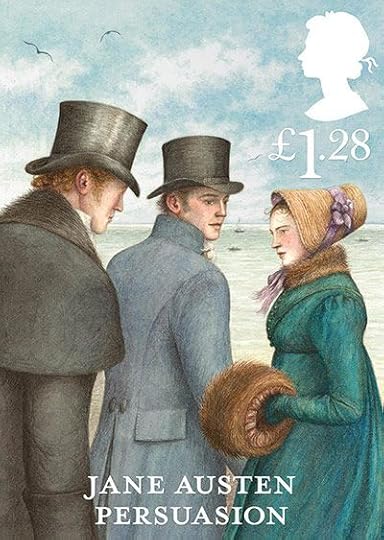
Analysis and plot summary of Persuasion
. . . . . . . . .
In spite of weakness and suffering, she finished Persuasion in July, 1816; but when she attempted the most difficult part of the story — the re-engagement of Anne and Captain Wentworth — her brain had, for the moment, lost its full power, and she produced a chapter which was certainly not up to her usual standard.
Her clear judgment was not dimmed: she saw the deficiencies in what she had written, but, for the first time in her life, she felt incapable of correcting them, and a great wave of despondency swept over her as she realized her own weakness of mind and body, and felt that the pen which she had enjoyed the use of for so many years was at length slipping from her grasp.
Her despondency was, however, premature; she went to bed in very low spirits, but the next morning her brain was in full vigor again, and she resumed her pen with all the old energy. She now wrote two chapters in place of the one she had already composed, and as these give us the visit of the Musgroves to Bath; all the scenes immediately following that visit.
With the reconciliation of Anne and Captain Wentworth, her readers must feel that she has left us nothing worthier than her genius. She herself was quite contented with her second attempt, and indeed, it is difficult to see how she could have been otherwise.
. . . . . . . . .
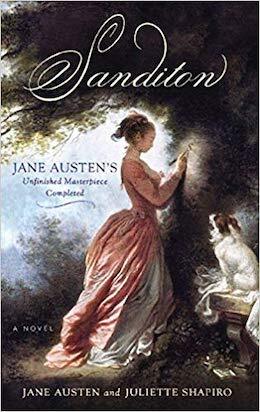
Sanditon: An Unfinished Novel by Jane Austen
. . . . . . . . .
For some time after this, she attempted no further writing, but in January 1817 she either was, or fancied herself, better, for she wrote to a friend, “I have certainly gained strength through the winter, and am not far from being well, and I think I understand my own case now so much better than I did as to be able to keep off any serious return of illness.”
And about the same time, she wrote to a niece, “I feel myself so much stronger than I was, and can so perfectly walk to Alton or back again without fatigue, that I hope to be able to do both when summer comes.”
Her hopes were never to be realized; but she took advantage of her comparative vigor to begin afresh novel on January 27th, 1817, and was able to go on with it, with tolerable rapidity, till March 17th.
This last unfinished attempt, which had not even received a title, has never been published, but extracts from it have been given, and a sketch of the plot as far as it was worked out. [Note: it’s likely that this refers to her unfinished novel, Sanditon.]
Hope begins to fade
It is possible that, if health had been granted her, Jane Austen would have polished and improved upon the materials until the characters had become as real to us as the Bertrams and the Bennets; but by this time her alarming state had become evident to every member of the family, and when two of James Austen’s daughters went to see her in April, the younger one recorded:
“She was then keeping to her room but said she would see us, and we went up to her. She was in her dressing-gown and was sitting quite like an invalid in an armchair, but she got up and kindly greeted us, and then, pointing to seats which had been arranged for us by the fire, she said, ‘There is a chair for the married lady and a little stool for you, Caroline.’
It is strange, but those trifling words were the last of hers that I can remember, for I retain no recollection of what was said by anyone in the conversation that ensued. I was struck by the alteration in herself.
She was very pale, her voice was weak and low, and there was about her a general appearance of debility and suffering, but I have been told that she never had such acute pain. She was not equal to the exertion of talking to us, and our visit to the sickroom was a very short one, Aunt Cassandra soon taking us away, I do not suppose we stayed a quarter of an hour, and I never saw Aunt Jane again.”
Still, she continued cheerful, though she can have had by this time little hope of recovery; and in April her brother James writes to his daughter that, “I was happy to have a good account of herself written by her own hand in a letter from your Aunt Jane, but all who love, and that is all who know her, must be anxious on her account.” By this time, she had given up her novel-writing, so that she must have felt herself weak indeed.
Awareness of her deteriorating state
In May she and her sister Cassandra moved into lodgings in Winchester that she might be within reach of an eminent medical man living there; but he had little hope of saving her, though, after going there, she seemed for a time rather stronger. She wrote touchingly to one of her nephews:
“I will only say further that my dearest sister, my tender, watchful, indefatigable nurse, has not been made ill by her exertions. As to what I owe her, and the anxious affection of all my beloved family on this occasion, I can only cry over it, and pray God to bless them more and more.”
She was now fully aware of her state and in no way alarmed by it, though — might she have chosen — she would gladly have lived longer. Every year was bringing her fresh fame and giving her new assurances of success; she was surrounded by loving relations and friends, and she had scarcely reached middle age.
Her brothers were scattered in their own various homes, but their children were a constant interest and pleasure to her, and she had the unceasing companionship of the sister who was more than anyone else to her, and from whom she had been so little separated.
Jane Austen’s last days
There was much to make life sweet to Jane Austen at the age of forty-two; nothing that should make her wish to leave it, and yet, with her usual contentedness, she quietly acquiesced in the summons for her, and endeavored, as far as possible, to cheer those around her.
Her sister-in-law, Mrs. James Austen, came to Winchester to help Cassandra with the nursing; and soon after she arrived, a sudden prostration in the patient made everyone believe that the end had come. Jane was aware of it, and, calm and serene as ever, said words of farewell to all who were with her.
Finally, she turned to her sister-in-law with warm expressions of gratitude for all her care and help, adding, “You have always been a kind sister to me, Mary.” The end was not as near as the watchers thought, for she lingered until past the middle of July, but when it came, it seemed sudden, as is often the case after a lingering illness.
On the 18th of July, 1817, Jane Austen breathed her last; and those who had watched her throughout her illness were thankful that the months of weariness and suffering were over, even though they felt how irreparable was their own loss.
. . . . . . . . . .
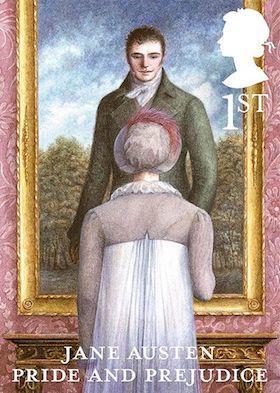
You may also enjoy:
Jane Austen’s First Attempts at Publishing
. . . . . . . . . .
Their feelings are best described in the letter which Cassandra wrote to her niece, Fanny Knight, two days after Jane had passed away; and this portion of the letter gives, also, the most complete account of her last hours:
“Since Tuesday evening, when her complaint returned, there was a visible change, she slept more and much more comfortably; indeed, during the last eight and forty hours, she was more asleep than awake. Her looks altered, and she fell away, but I perceived no material diminution of strength, and though I was then hopeless of recovery, I had no suspicion of how rapidly my loss was approaching.
I have lost a treasure, such a sister, such a friend as never can have been surpassed. She was the sun of my life, the gilder of every pleasure, the soother of every sorrow; I had not a thought concealed from her and feel as if I had lost a part of myself.
I loved her only too well—not better than she deserved, but I am conscious that my affection for her made me sometimes unjust to and negligent of others; and I can acknowledge, more than as a general principle, the justice of the Hand which has struck this blow …
I thank God that I was enabled to attend her to the last; and amongst my many causes of self-reproach, I have not to add any wilful neglect of her comfort.
She felt herself to be dying about half an hour before she became tranquil and apparently unconscious. During that half-hour was her struggle, poor soul! She said she could not tell us what she suffered, though she complained of little fixed pain.
When I asked her if there was anything she wanted, her answer was she wanted nothing but death, and some of her words were, ‘God grant me patience; pray for me, oh, pray for me.’ Her voice was affected, but as long as she spoke she was intelligible.
I hope I do not break your heart, my dearest Fanny, by these particulars; I mean to afford you gratification whilst I am relieving my own feelings.
… The last sad ceremony is to take place on Thursday morning; her dear remains are to be deposited in the Cathedral. It is a satisfaction to me to think they are to lie in a building she admired so much.”
A proper burial and fitting inscription
Jane Austen’s remains were laid near the middle of the north aisle of Winchester Cathedral, almost opposite the well-known tomb of William of Wykeham. The taste of the day was for full and somewhat minute epitaphs, and on a large slab of black marble which marks the spot was placed the following inscription:
“In memory of Jane Austen, youngest daughter of the late Revd. George Austen, formerly rector of Steventon in this County. She departed this life on July 18, 1817, aged 41, after a long illness, supported with the patience and hope of a Christian.
The benevolence of her heart the sweetness of her temper, and the extraordinary endowments of her mind obtained the regard of all who knew her and the warmest love of her immediate connections.
Their grief is in proportion to their affection; they know their loss to be irreparable, but in their deepest affliction they are consoled by a firm, though humble, hope that her charity, devotion, faith, and purity have rendered her soul acceptable in the sight of her Redeemer.”
The post Jane Austen’s Final Days — Her Illness, Courage, and Death appeared first on Literary Ladies Guide.
Jane Austen’s Final Days — Illness, Courage, and Death
Jane Austen by Sarah Fanny Malden (1889) is a valuable resource on the life and work of the beloved British author from the perspective of the late 19th century. The following excerpt describes Jane Austen’s final days —her illness, the courage she displayed, and death.
Persuasion, the last novel Austen worked on prior to her death, and Northanger Abbey, her first completed novel, were both published six months after her death in 1817.
Mrs. Malden said of her sources, “The writer wishes to express her obligations to Lord Brabourne and Mr. C. Austen Leigh for their kind permission to make use of the Memoir and Letters of their gifted relative, which has been her principal authorities for this work.”
The 1889 publication of Malden’s Jane Austen was part of an Eminent Women series published by W.H. Allen & Co., London. The following excerpt is in the public domain.
Emma was the last work that Jane saw published
Emma was the last of her works that Jane Austen lived to see published; and despite the compliments, she received upon it, and the pleasure they gave her, its publication had sad associations for her.
Her brother Henry Austen’s illness had begun while his sister was busy bringing out the novel, and it had been a very sudden and serious one. At first, Jane was alone with him, but, as the danger increased with alarming rapidity, she sent for the other members of the family.
They all arrived as quickly as was possible in those days when locomotion was so difficult; but Henry Austen was at death’s door before they could get to him, and for many days he lay between life and death, although he recovered eventually.
The strain and anxiety told much upon Jane, and she was still in a very low nervous state when fresh trouble came upon her family. Henry, who had tried several professions, and had been unable to establish himself in any, had for some time past been a partner in a bank, which now went broke. Many of the Austen family besides himself were involved in the loss.
. . . . . . . .

Learn more about Jane Austen
. . . . . . . .
Any family trouble was always deeply felt by Jane, and this came upon her when she was quite unfit for any fresh trial. Her health and spirits, which were already much weakened, sank perceptibly, and though she was anything but nervous about herself, and seldom mentioned her own health in her letters, she was evidently very far from well.
In 1816 one of her nieces had written to her with earnest inquiries after her health, in answer to which Jane replied,
“Many thanks for your kind care of my health. I certainly have not been well for many weeks, and about a week ago I was very poorly. I have had a good deal of fever at times and indifferent nights; but I am considerably better now, and am recovering my looks a little, which have been bad enough — black and white and every wrong colour. I must not depend upon being ever very blooming again. Sickness is a dangerous indulgence at my time of life.”
In the same making-the-best-of-it spirit, she wrote about this time to her brother Charles: ‘I live upstairs for the present and am coddled. I am the only one of the party who has been so silly, but a weak body must excuse weak nerves.’”
Increasing discomfort soon convinced her that she was not as near recovery as she had hoped, and though she was so cheerful before her family that they could not tell whether she was alarmed or not, before others she sometimes allowed herself to relax in this watchful self-control.
While staying with some old friends in scenes that were very familiar to her, they were struck by the way in which she spoke and acted as though she never expected to be there again, and the visible failure in her health greatly alarmed them.
Her letters, too, became sadder in tone, and in one of them the depression was so evident that she pulls herself up with the remark, “But I am getting too near complaint; it has been the appointment of God, however secondary causes may have operated.”
In the summer of 1816, she was able to pay a visit — which she must have known would be her last — to the old home at Steventon; and when she returned to Chawton, she continued to work at Persuasion, though under great difficulty from bodily weakness.
It may have been the consciousness of approaching death that touched that exquisite novel — the last she ever completed — with the wonderful pathetic sweetness and grace in which it stands alone among her works; even the happy termination having a sort of subdued radiance about it quite unlike the endings of her other stories.
Considering her state of health, it is wonderful that she could write at all. She had been obliged to give up all walking and almost all driving, while inside the house she could seldom find comfort or rest, except by lying down. The little drawing-room of Chawton Cottage contained only one sofa, which was appropriated to Mrs. Austen, then more than seventy years old, but if she had seen that her daughter needed it, she would, probably, have refused to use it herself.
Jane, who carried on all her work, literary or otherwise, amid all that was going on with her family, made herself a sort of couch with some chairs, and declared that she preferred this to the real sofa — a “pious fraud” which the grown-up members of the family respected in silence.
. . . . . . . .

Analysis and plot summary of Persuasion
. . . . . . . . .
In spite of weakness and suffering, she finished Persuasion in July, 1816; but when she attempted the most difficult part of the story — the re-engagement of Anne and Captain Wentworth — her brain had, for the moment, lost its full power, and she produced a chapter which was certainly not up to her usual standard.
Her clear judgment was not dimmed: she saw the deficiencies in what she had written, but, for the first time in her life, she felt incapable of correcting them, and a great wave of despondency swept over her as she realized her own weakness of mind and body, and felt that the pen which she had enjoyed the use of for so many years was at length slipping from her grasp.
Her despondency was, however, premature; she went to bed in very low spirits, but the next morning her brain was in full vigor again, and she resumed her pen with all the old energy. She now wrote two chapters in place of the one she had already composed, and as these give us the visit of the Musgroves to Bath; all the scenes immediately following that visit.
With the reconciliation of Anne and Captain Wentworth, her readers must feel that she has left us nothing worthier than her genius. She herself was quite contented with her second attempt, and indeed, it is difficult to see how she could have been otherwise.
. . . . . . . . .

Sanditon: An Unfinished Novel by Jane Austen
. . . . . . . . .
For some time after this, she attempted no further writing, but in January 1817 she either was, or fancied herself, better, for she wrote to a friend, “I have certainly gained strength through the winter, and am not far from being well, and I think I understand my own case now so much better than I did as to be able to keep off any serious return of illness.”
And about the same time, she wrote to a niece, “I feel myself so much stronger than I was, and can so perfectly walk to Alton or back again without fatigue, that I hope to be able to do both when summer comes.”
Her hopes were never to be realized; but she took advantage of her comparative vigor to begin afresh novel on January 27th, 1817, and was able to go on with it, with tolerable rapidity, till March 17th.
This last unfinished attempt, which had not even received a title, has never been published, but extracts from it have been given, and a sketch of the plot as far as it was worked out. [Note: it’s likely that this refers to her unfinished novel, Sanditon.]
Hope begins to fade
It is possible that, if health had been granted her, Jane Austen would have polished and improved upon the materials until the characters had become as real to us as the Bertrams and the Bennets; but by this time her alarming state had become evident to every member of the family, and when two of James Austen’s daughters went to see her in April, the younger one recorded:
“She was then keeping to her room but said she would see us, and we went up to her. She was in her dressing-gown and was sitting quite like an invalid in an armchair, but she got up and kindly greeted us, and then, pointing to seats which had been arranged for us by the fire, she said, ‘There is a chair for the married lady and a little stool for you, Caroline.’
It is strange, but those trifling words were the last of hers that I can remember, for I retain no recollection of what was said by anyone in the conversation that ensued. I was struck by the alteration in herself.
She was very pale, her voice was weak and low, and there was about her a general appearance of debility and suffering, but I have been told that she never had such acute pain. She was not equal to the exertion of talking to us, and our visit to the sickroom was a very short one, Aunt Cassandra soon taking us away, I do not suppose we stayed a quarter of an hour, and I never saw Aunt Jane again.”
Still, she continued cheerful, though she can have had by this time little hope of recovery; and in April her brother James writes to his daughter that, “I was happy to have a good account of herself written by her own hand in a letter from your Aunt Jane, but all who love, and that is all who know her, must be anxious on her account.” By this time, she had given up her novel-writing, so that she must have felt herself weak indeed.
Awareness of her deteriorating state
In May she and her sister Cassandra moved into lodgings in Winchester that she might be within reach of an eminent medical man living there; but he had little hope of saving her, though, after going there, she seemed for a time rather stronger. She wrote touchingly to one of her nephews:
“I will only say further that my dearest sister, my tender, watchful, indefatigable nurse, has not been made ill by her exertions. As to what I owe her, and the anxious affection of all my beloved family on this occasion, I can only cry over it, and pray God to bless them more and more.”
She was now fully aware of her state and in no way alarmed by it, though — might she have chosen — she would gladly have lived longer. Every year was bringing her fresh fame and giving her new assurances of success; she was surrounded by loving relations and friends, and she had scarcely reached middle age.
Her brothers were scattered in their own various homes, but their children were a constant interest and pleasure to her, and she had the unceasing companionship of the sister who was more than anyone else to her, and from whom she had been so little separated.
Jane Austen’s last days
There was much to make life sweet to Jane Austen at the age of forty-two; nothing that should make her wish to leave it, and yet, with her usual contentedness, she quietly acquiesced in the summons for her, and endeavored, as far as possible, to cheer those around her.
Her sister-in-law, Mrs. James Austen, came to Winchester to help Cassandra with the nursing; and soon after she arrived, a sudden prostration in the patient made everyone believe that the end had come. Jane was aware of it, and, calm and serene as ever, said words of farewell to all who were with her.
Finally, she turned to her sister-in-law with warm expressions of gratitude for all her care and help, adding, “You have always been a kind sister to me, Mary.” The end was not as near as the watchers thought, for she lingered until past the middle of July, but when it came, it seemed sudden, as is often the case after a lingering illness.
On the 18th of July, 1817, Jane Austen breathed her last; and those who had watched her throughout her illness were thankful that the months of weariness and suffering were over, even though they felt how irreparable was their own loss.
. . . . . . . . . .

You may also enjoy:
Jane Austen’s First Attempts at Publishing
. . . . . . . . . .
Their feelings are best described in the letter which Cassandra wrote to her niece, Fanny Knight, two days after Jane had passed away; and this portion of the letter gives, also, the most complete account of her last hours:
“Since Tuesday evening, when her complaint returned, there was a visible change, she slept more and much more comfortably; indeed, during the last eight and forty hours, she was more asleep than awake. Her looks altered, and she fell away, but I perceived no material diminution of strength, and though I was then hopeless of recovery, I had no suspicion of how rapidly my loss was approaching.
I have lost a treasure, such a sister, such a friend as never can have been surpassed. She was the sun of my life, the gilder of every pleasure, the soother of every sorrow; I had not a thought concealed from her and feel as if I had lost a part of myself.
I loved her only too well—not better than she deserved, but I am conscious that my affection for her made me sometimes unjust to and negligent of others; and I can acknowledge, more than as a general principle, the justice of the Hand which has struck this blow …
I thank God that I was enabled to attend her to the last; and amongst my many causes of self-reproach, I have not to add any wilful neglect of her comfort.
She felt herself to be dying about half an hour before she became tranquil and apparently unconscious. During that half-hour was her struggle, poor soul! She said she could not tell us what she suffered, though she complained of little fixed pain.
When I asked her if there was anything she wanted, her answer was she wanted nothing but death, and some of her words were, ‘God grant me patience; pray for me, oh, pray for me.’ Her voice was affected, but as long as she spoke she was intelligible.
I hope I do not break your heart, my dearest Fanny, by these particulars; I mean to afford you gratification whilst I am relieving my own feelings.
… The last sad ceremony is to take place on Thursday morning; her dear remains are to be deposited in the Cathedral. It is a satisfaction to me to think they are to lie in a building she admired so much.”
A proper burial and fitting inscription
Jane Austen’s remains were laid near the middle of the north aisle of Winchester Cathedral, almost opposite the well-known tomb of William of Wykeham. The taste of the day was for full and somewhat minute epitaphs, and on a large slab of black marble which marks the spot was placed the following inscription:
“In memory of Jane Austen, youngest daughter of the late Revd. George Austen, formerly rector of Steventon in this County. She departed this life on July 18, 1817, aged 41, after a long illness, supported with the patience and hope of a Christian.
The benevolence of her heart the sweetness of her temper, and the extraordinary endowments of her mind obtained the regard of all who knew her and the warmest love of her immediate connections.
Their grief is in proportion to their affection; they know their loss to be irreparable, but in their deepest affliction they are consoled by a firm, though humble, hope that her charity, devotion, faith, and purity have rendered her soul acceptable in the sight of her Redeemer.”
The post Jane Austen’s Final Days — Illness, Courage, and Death appeared first on Literary Ladies Guide.
My Friend Flicka by Mary O’Hara (1941)
My Friend Flicka, the 1941 novel by Mary O’Hara, is this author’s most enduring work. The ranch living and rugged Wyoming landscape of her personal experience inspired the novel.
A classic that’s for “children of all ages,” My Friend Flicka is the story of Ken McLaughlin, a rancher’s son, and his untamed horse.
Ken’s father, a practical Scotsman, had no patience for his son’s dreaminess, so out of place in the harsh realities of the family’s horse-breeding farm. Ken becomes smitten with a wild colt, who he names Flicka, meaning “little filly.”
His devotion to the horse and to taming her grows along with his acceptance of responsibility as a young man. My Friend Flicka was the first volume in a trilogy, followed by Thunderhead (1943) and Green Grass of Wyoming (1946).
The novel quickly became a bestselling classic and was the basis of a successful 1943 film starring Roddy MacDowall. It was also adapted as a television show, airing from 1956 to 1957, and reran throughout the 1960s.
A synopsis of My Friend Flicka
From the 1941 edition: Ken McLaughlin was only eleven years old, but for as long as he could remember he had wished for nothing more than his very own colt. He had tried to do his chores well around his father’s horse ranch, but whenever he was alone, he found his thoughts drifting off to that one wish …
And as a result, he usually made some mistakes like forgetting to be on time for dinner or leaving the cinch strap too loose on the horse he was riding. Then his father would get angry, and Ken felt he would never have his own colt.
One morning at the breakfast table, though, Ken heard his father say something that almost made him fall off his chair. “Ken, I’m giving you one week to look over all the new yearlings and choose one for yourself.”
What a wonderful surprise! He was to have his very own colt to train and care for and ride to his heart’s content.
By the end of the week, Ken had made his choice of a golden-brown filly with a flowing white mane and tail. But what about a name for his horse? Then Ken remembered what Gus, the hired hand, had said when the filly was a newborn colt.
“Gee whiz! Look at the little Flicka.”
“What does Flicka mean, Gus?” Ken asked.
“Why, it’s Swedish for a little girl.”
And now Ken had a name for his colt. “I’m going to call her Flicka!” he announced proudly at dinner that night.
This is the beginning of the exciting, heartwarming adventure of a boy and his horse, and how they grew up together — a story that in a few short years has become one of the most popular classics for young readers.
. . . . . . . . .
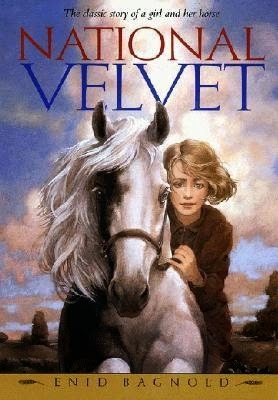
You may also enjoy:
4 Classic Horse Stories by Women Authors
. . . . . . . . .
From the original review in the Daily Times (Davenport, Iowa), September 20, 1941: This is the story of a friendship between a boy and a horse written by Mary O’Hara, who in all her childhood has never realized her wish for a colt. She has called this tale “My Friend Flicka” because it is about a filly of that name who lived on a mountain ranch of Wyoming.
Flicka was the granddaughter of an English thoroughbred mare and her mother’s sire was a hellion mustang and this meant that she had bad blood in her veins.
Eleven-year-old Kenneth McLaughlin who had been told by his father that he could select any spring colt or yearling from the entire herd for his own had chosen Flicka for a special reason aside from her beauty and speed, and nothing in his short life had given him so much pleasure as his possession of this wild little pony.
A sense of responsibility, building trust
Bob McLaughlin, Kenneth’s father, gave the boy a colt because he had hopes that by this means he could arouse in him a sense of responsibility. For it was evident to Rob that Kenneth had definite shortcomings. The boy was too much of a dreamer. He was dumb. He was not reliable. And not even fear of punishment had caused Kenneth to mend his ways.
It was a great disappointment to Rob when Ken chose Flicka for his own, because of the wild strain in the pony. Rob himself had had enough of that breed. Flicka, he was sure, was loco like her mother, Rocket, and like her mother, she would come to a bad end.
But Kenneth did not believe that Flicka was loco. What did loco mean? Loco meant unpredictable. Loco meant crazy. Loco was the way a lone wolf was savage and untamable.
Kenneth had to worship Flicka from afar. She would not let him come near her. She had no trust in him or any human.
And if Flicka, revolting at being penned in, had not all but killed herself in a jump over a high barbed wire fence, Kenneth may never have known the truth about Flicka’s nature — that she was not loco, only scared; that she was capable of great affection and devotion, and that the blood of her great sire, the stallion, Banner, was triumphant over the mustang strain.
. . . . . . . . . .
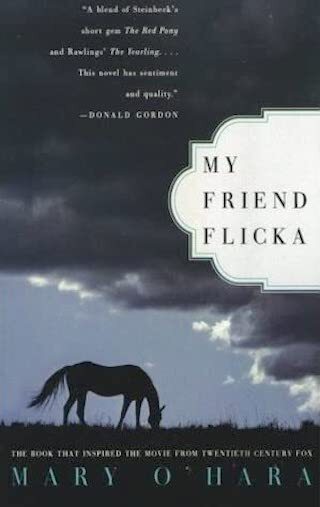
My Friend Flicka on Amazon*
. . . . . . . . . .
A stricken animal and a devoted boy
If the reader’s heart was touched at Ken’s longing for a horse before his father decided to give him one, he will be beside himself now as the boy yearns over a stricken and dying pet. How well does Mary O’Hara understand the human heart and how instinctive is your response to all this because you are Ken, and Flicka is your home, and Flicka is marked for doom.
Yet miracles can happen, can’t they? When one loves so much, it is necessary that the loved one must be taken away? Or did Flicka permit Kenneth to touch her merely because she was lame and could not prevent it?
Flicka’s wounds were healing nicely when an infection set in, first on the leg and then all through her body. But she had seemed to get better from these new complications and now she was following Kenneth about everywhere like a faithful dog.
But the days passed and Flicka was having a setback again. She was losing flesh every day and she looked like a scarecrow. Ken’s father had not been paying much attention because he was so busy with the harvest but one day he saw Flicka and asked:
“What is that?” Ken knew the law of the ranch-that an animal that could not be cured must not be allowed to suffer pain. He knew that Flicka would be shot, and though his father had ordered the Swedish foreman to do it when Ken was not around, Ken sensed that the command had been given.
The Swede promised Ken that he would wait one more day. The boy say goodbye to his pet but in the night he heard a whinny and he found the feverish.
Flicka bogged in the stream of the pasture where she had gone in relief from her pain. All night he stayed with her, and it seemed to him many times that she was gone, but morning came, and the boy was unconscious and Flicka was better.
Ken’s turn to be at death’s door
Now it was Ken’s turn to be sick and to lie near death’s door. His mother tells him that Flicka is better but he cannot be greatly hopeful and besides there is that order of his father’s. His ears strain to hear a shot and finally, he hears it in between the crashes of thunder.
For a long time, Ken hovers between life and death and when he does get better he is apathetic. His mother and the doctor think that he is too weak to bear the shock of hearing that Flicka is alive, that she is getting well, and that the shot he heard once had been directed at a mountain lion.
The ultimate bond between a boy and his horse
Now as the last chapter is being related, Kenneth is just beginning to show a little interest in things. He had known that Flicka was alive, but he had not sought her out. He was almost afraid to see her and to be caught up with life again.
Then one day his fear left him and quite strong now and with joy in his heart he went alone to the pasture. Flicka saw him and came running to meet him and her whinny was like none he had heard from her before-a nicker of delight and recognition and the expression of the ultimate bond between them.
. . . . . . . . .

. . . . . . . . .
Media adaptations of My Friend FlickaFilm
My Friend Flicka (1943), starring Roddy McDowall as Kenneth McLaughlin. It was followed by sequels based on the two books in the Flicka trilogy by Mary O’Hara’s subsequent novels, Thunderhead, Son of Flicka (1945), and Green Grass of Wyoming (1948). Available to stream on Amazon*
Flicka (2006), a 20th Century Fox film loosely adapted the story to contemporary times, starring Alison Lohman as Katy McLaughlin (replacing the original male protagonist, Kenneth). Flicka 2 (2010) and Flicka: Country Pride (2012) followed in this series.
Radio
My Friend Flicka (June 7, 1943), radio adaption on Lux Radio Theatre, starring Roddy McDowall and Rita Johnson reprising their 1943 film roles as Ken McLaughlin and Nell McLaughlin.
Television
My Friend Flicka was a 20th Century Fox television series on CBS that ran from 1956 to 1957.
. . . . . . . . . .
*This is an Amazon Affiliate link. If a product is purchased by linking through, Literary Ladies Guide receives a modest commission, which helps maintain our site and helps it to continue growing!
The post My Friend Flicka by Mary O’Hara (1941) appeared first on Literary Ladies Guide.
May 26, 2022
The Greengage Summer by Rumer Godden (1958)
The Greengage Summer by Rumer Godden is a 1958 coming-of-age novel, crackling with suspense, and portraying love and deceit in the Champagne country in France.
“On and off, all that hot French August, we made ourselves ill from eating the greengages…” is a memorable line from this engaging novel based on an incident in Godden’s youth.
Taking place in the shabby hotel of Les Oeillets, once gloriously elegant, the four children of the Grey family find themselves alone with the shady eccentrics who run the hotel. Like many of Godden’s novels, The Greengage Summer was adapted into a 1961 British film starring Kenneth More, Jane Asher, and Susannah York.
A Plot Summary of The Greengage SummerFrom the publisher, of the 2016 ebook edition (Open Road Media): A sixteen-year-old girl captures the dangerous attention of an older man in this New York Times–bestselling novel by the author of Black Narcissus.
Soon after the end of the terrible Great War, Mrs. Grey brings her five young children to the French countryside for the summer in hopes of instilling in them a sense of history and humility. But when she is struck down by a sudden illness and hospitalized, the siblings are left to fend for themselves at the lovely, bullet-scarred hotel Les Oeillets, under the suspicious, watchful eyes of its owner, Mademoiselle Zizi.
The young ones find a willing guide, companion, and protector in charming Englishman Eliot, a longtime resident at Les Oeillets and Mlle. Zizi’s apparent paramour. But as these warm days of freedom, discovery, and adolescent adventure unfold, Eliot’s interest becomes more and more focused on the eldest of the Grey children, sixteen-year-old daughter Joss.
The older man’s obsession with the innocent, alluring, heartbreakingly beautiful woman-child soon threatens to overstep all bounds of propriety. And as Eliot’s fascination increases, so do the jealousy of his disrespected lover, adding fuel to a dangerously smoldering fire that could erupt into unexpected violence at any moment.
Told from the point of view of Cecil, Joss’s sharp-eyed younger sister, The Greengage Summer is a beautiful, poignant, darkly tinged coming-of-age story rich in the sights, smells, and sounds of France’s breathtaking Champagne country. It remains one of the crowning literary achievements of Rumer Godden, acclaimed author of beloved classics Black Narcissus, The River, and In This House of Brede.
. . . . . . . . .

You may also enjoy:
The Peacock Spring by Rumer Godden
. . . . . . . . . .
From the original review by Elizabeth A. McSherry in The Hartford Courant, April 6, 1958: Rumer Godden’s children are wise beyond their years, and their observations in this enchanting novel solve much of the mystery that eludes their elders, even the detectives.
The story tells of the adventures of five English children on a summer vacation in France in a second-rate hotel near the forest of Compiègne. Their surname is Grey and their ages range from sixteen down to a mere five years. The second sister, some years later, recalls this strange and delightful summer.
Their mother, realizing how circumspect their lives had been in the usual drab watering places where she had taken them on vacations, did a most unpredictable thing. She took them across the Channel for a glimpse at the beauties of France. No sooner had they arrived at the hotel Les Oeiletts than she became seriously ill and was rushed off to a hospital where she had to remain for a long rest.
The children are left in the care of the proprietress, Mademoiselle Zizi, who had little use for them, and her assistant, Madame Corbet, who had so many duties that she paid little attention to them.
They spent much time in the kitchen with Monsieur Armand, reading his crime-filled newspapers, or watching Paul, the sullen helper who had developed a passion for the eldest Grey girl.
But it was the mysterious Englishman Eliot who gave them the most delightful entertainment. One of the oddest things about Eliot was that he had no idea of what kind of person he was. The children knew that he was Mademoiselle Zizi’s friend and that Madame Corbet was jealous of this attachment.
They also observed that Eliot disappeared for days at a time and then came back and made them all happy.
The Grey children’s innocent world and the world of crime are merged in the evil that hovered about the hotel. it was their keen observations that offered clues, hidden in the adult world. What they really learned that summer was that good and even can reside in the same person. in remembering this, they always thought of the good side of Eliot.
If you enjoyed Rumer Godden’s An Episode of Sparrows, you will find The Greengage Summer a sheer delight. It is witty and profound at the same time.
. . . . . . . . .
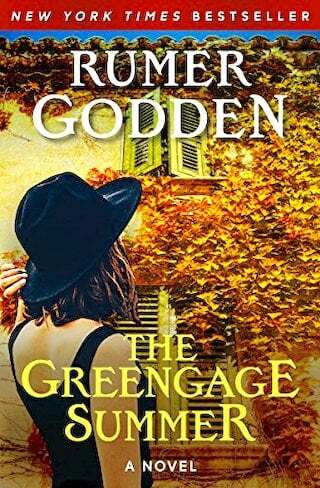
The Greengage Summer on Amazon*
. . . . . . . . .
More about A Greengage Summer A review on Kate MacDonald A review on Girl With Her Head in a Book Reader discussion on Goodreads. . . . . . . . . .
*This is an Amazon Affiliate link. If a product is purchased by linking through, Literary Ladies Guide receives a modest commission, which helps maintain our site and helps it to continue growing!
The post The Greengage Summer by Rumer Godden (1958) appeared first on Literary Ladies Guide.



